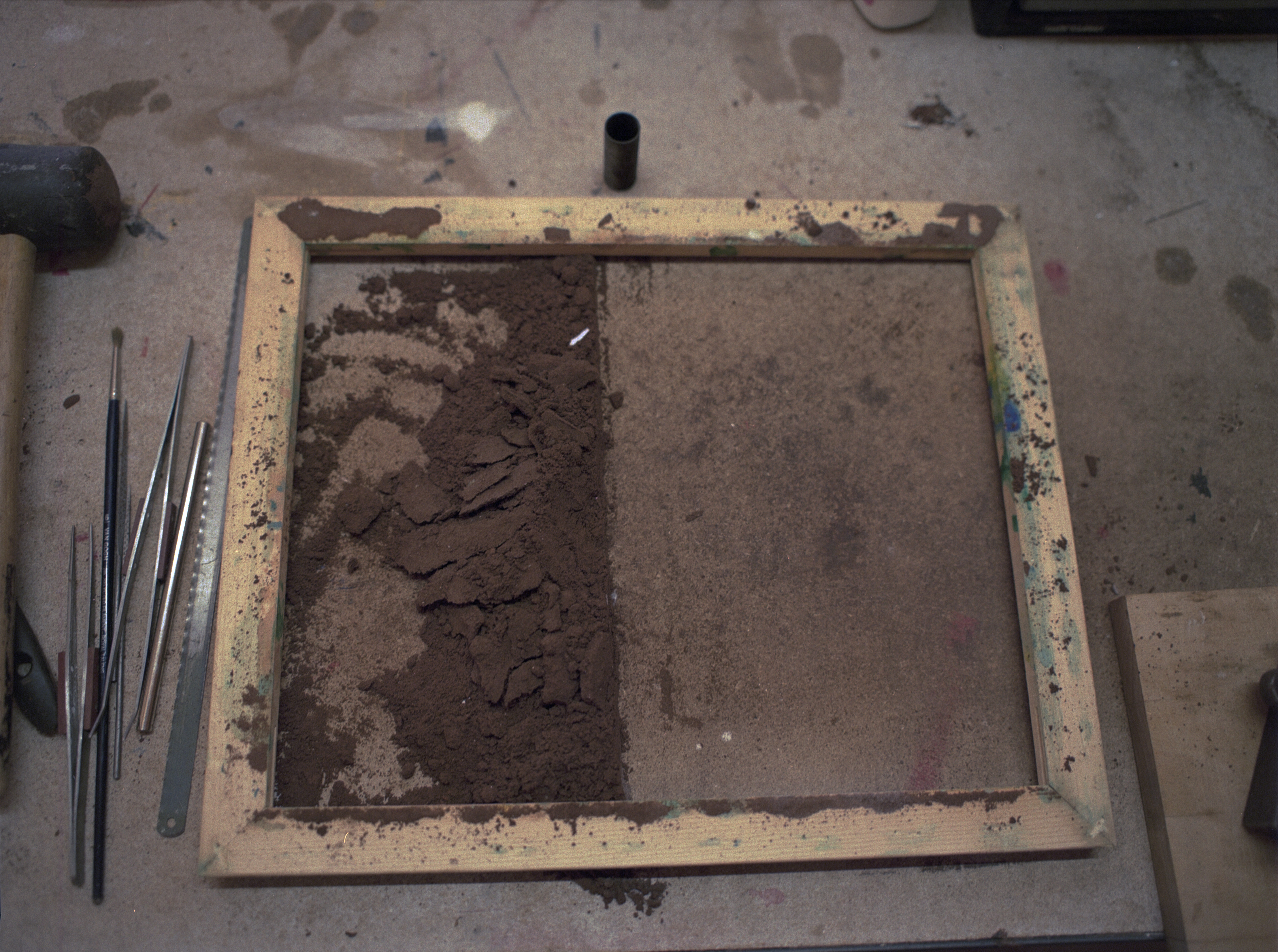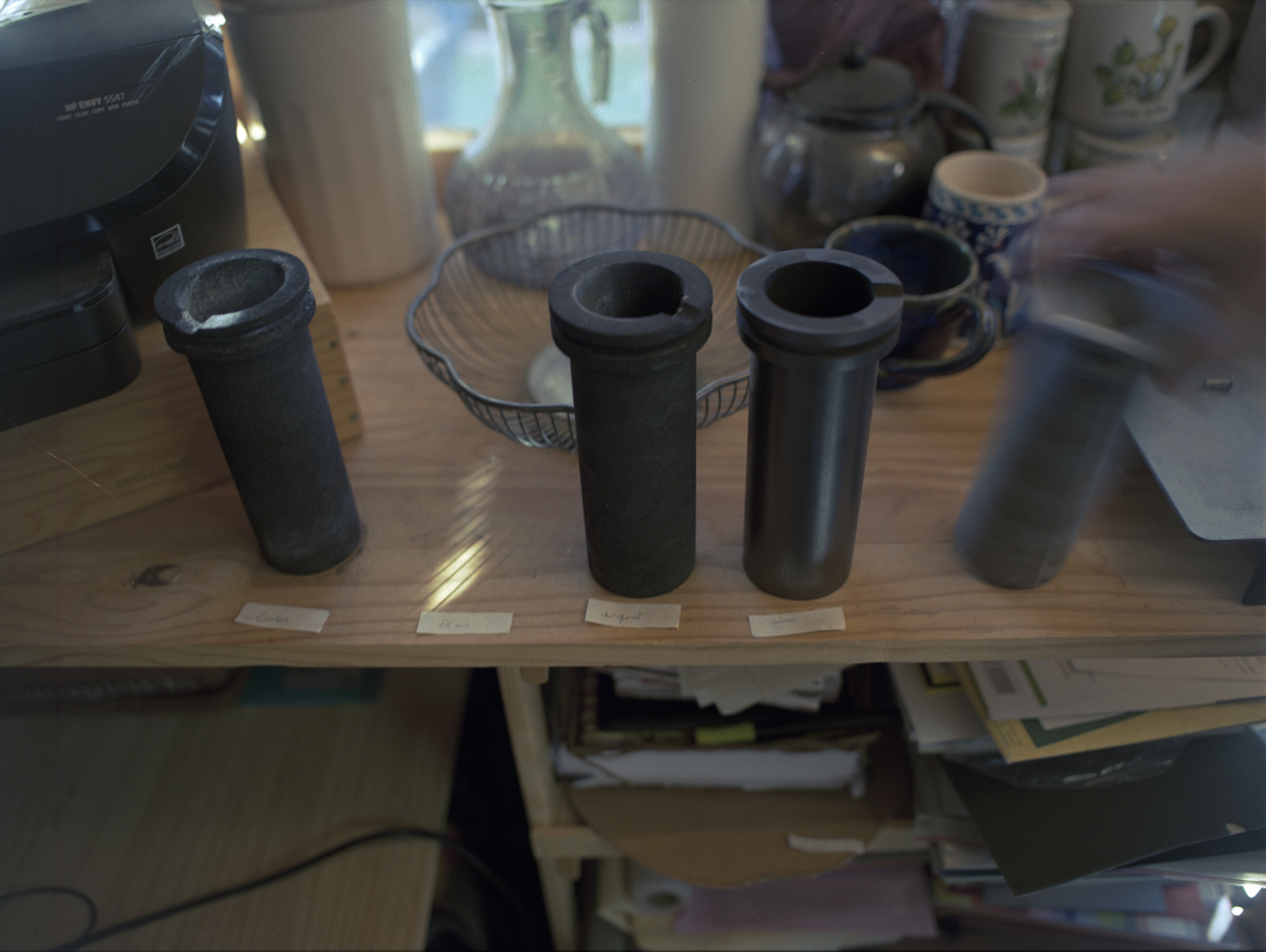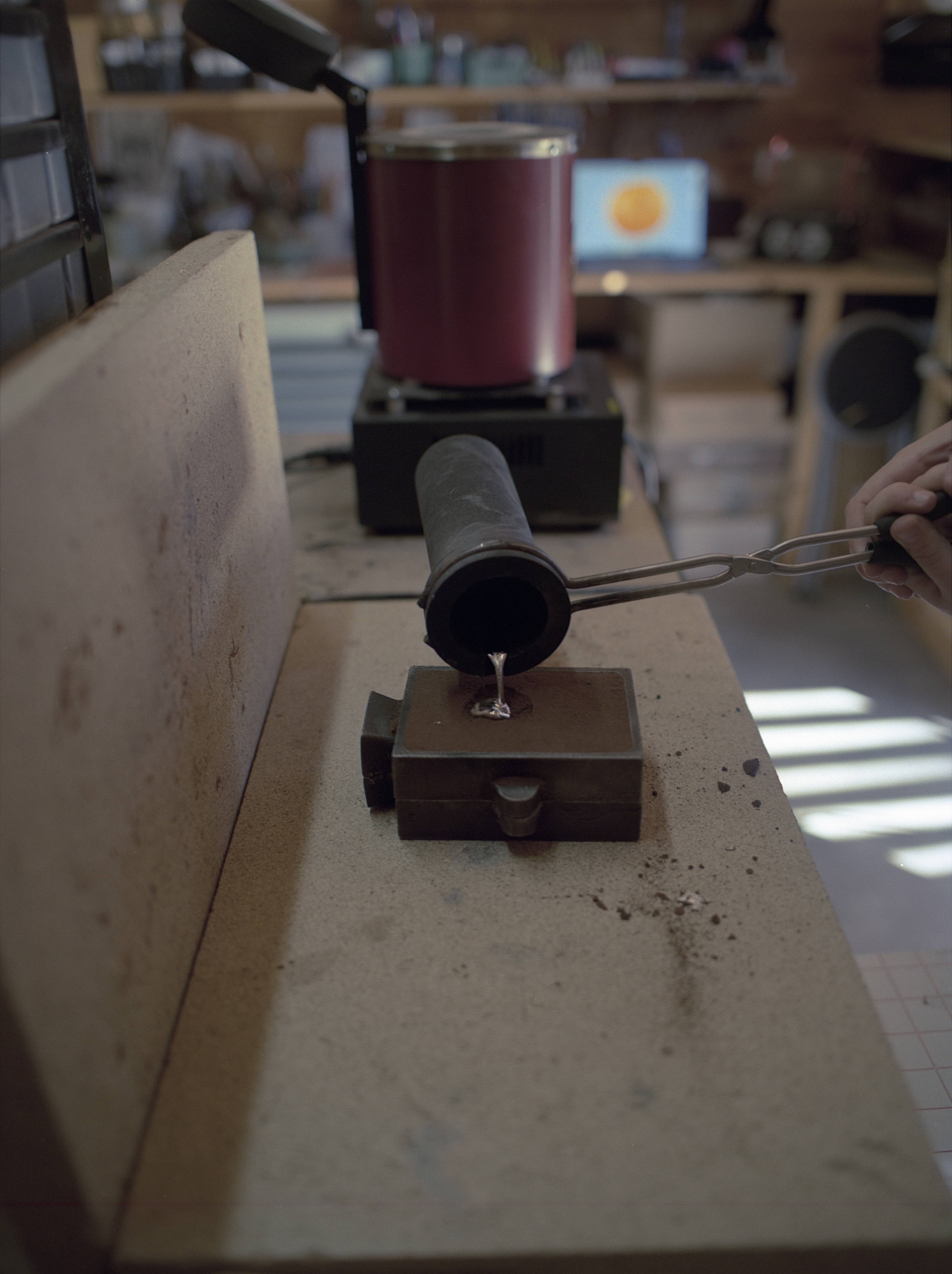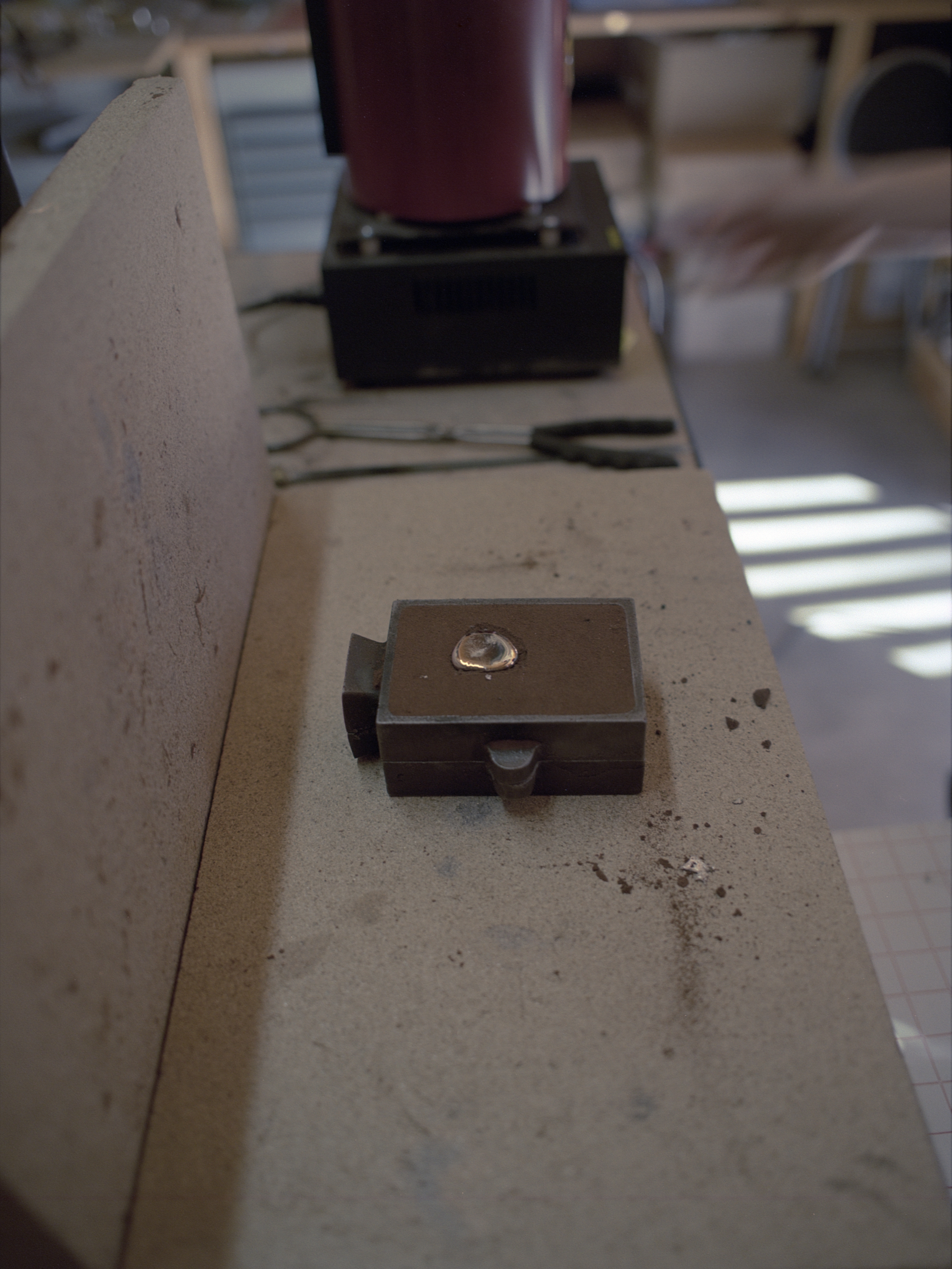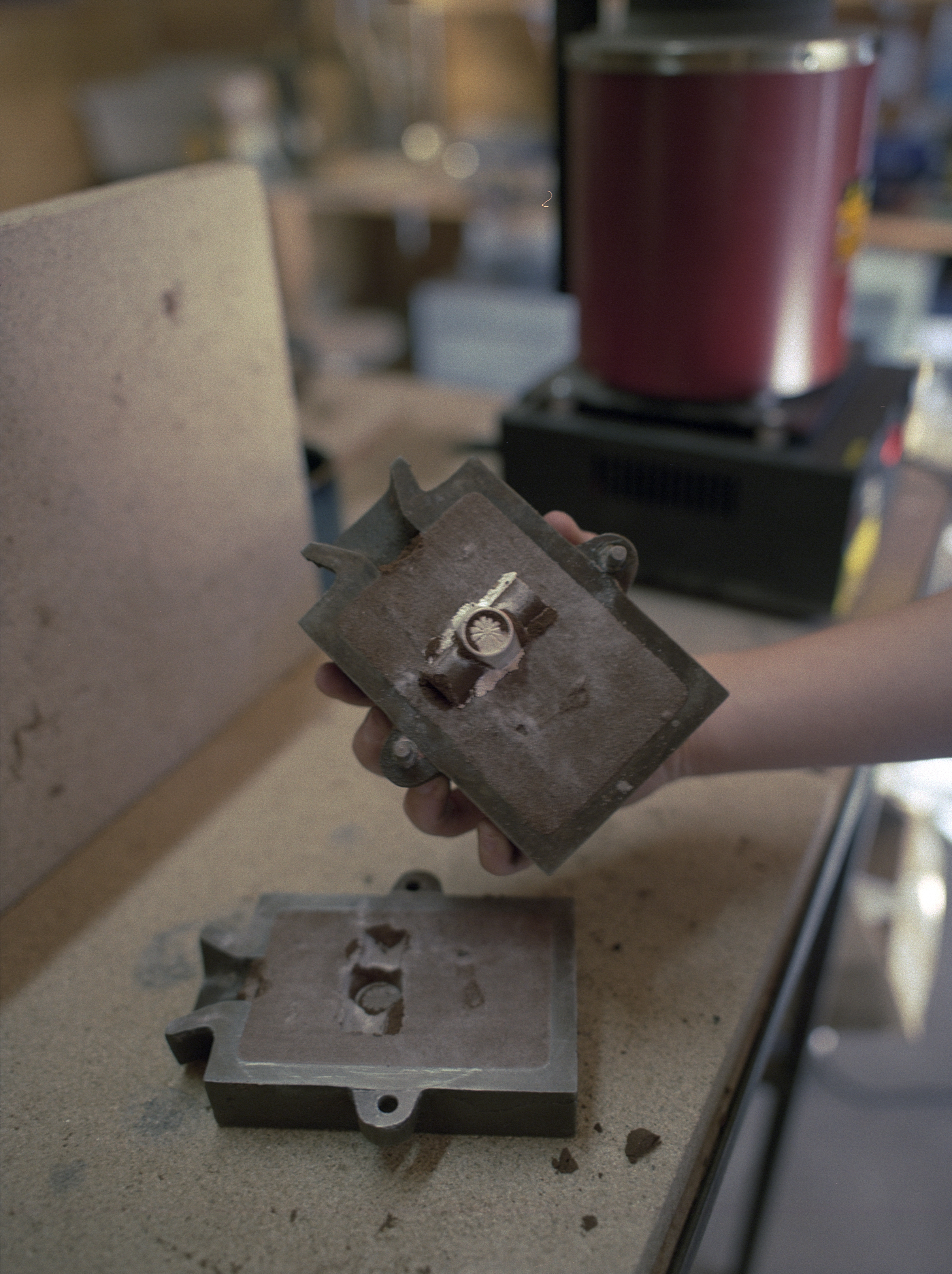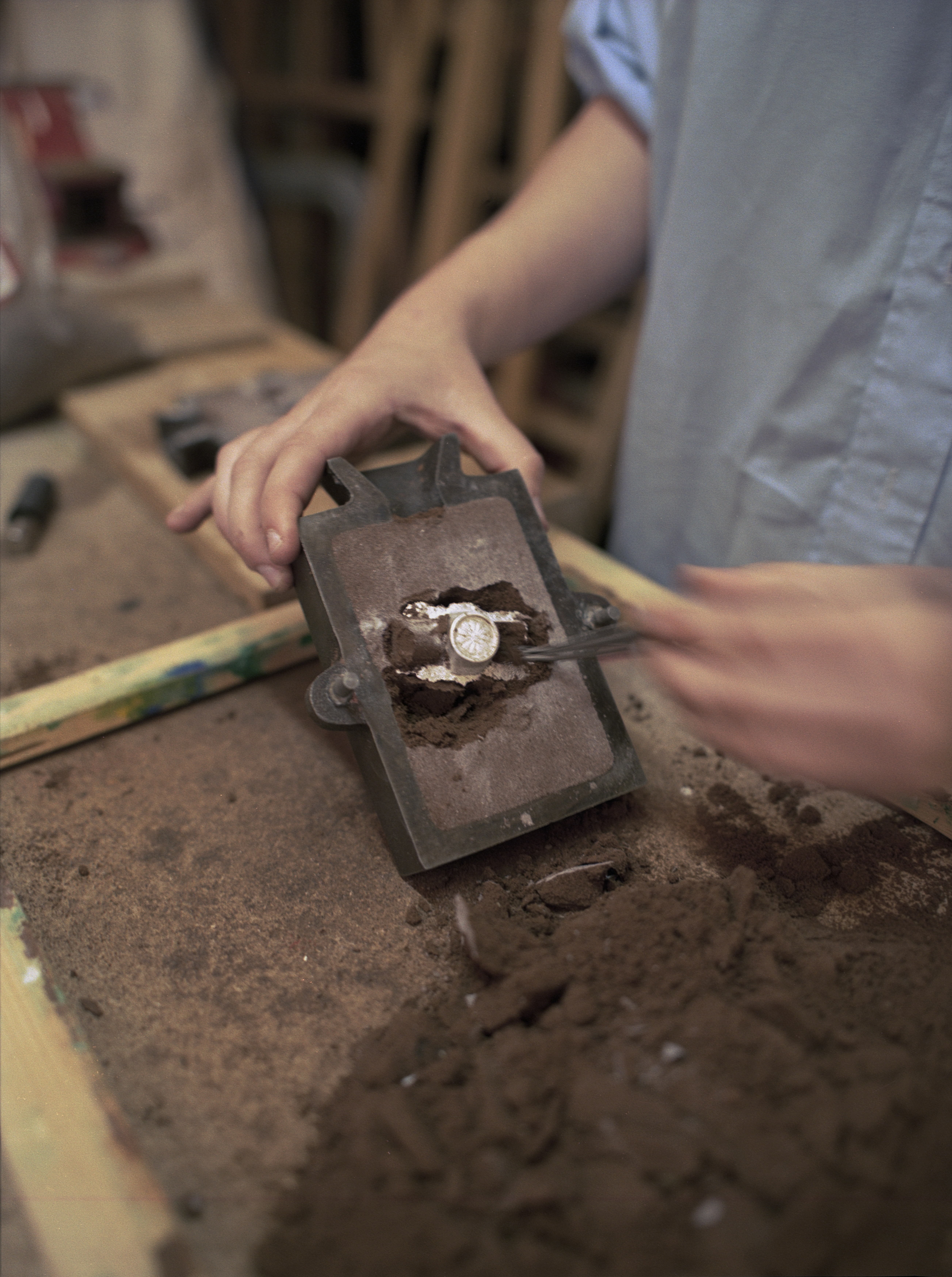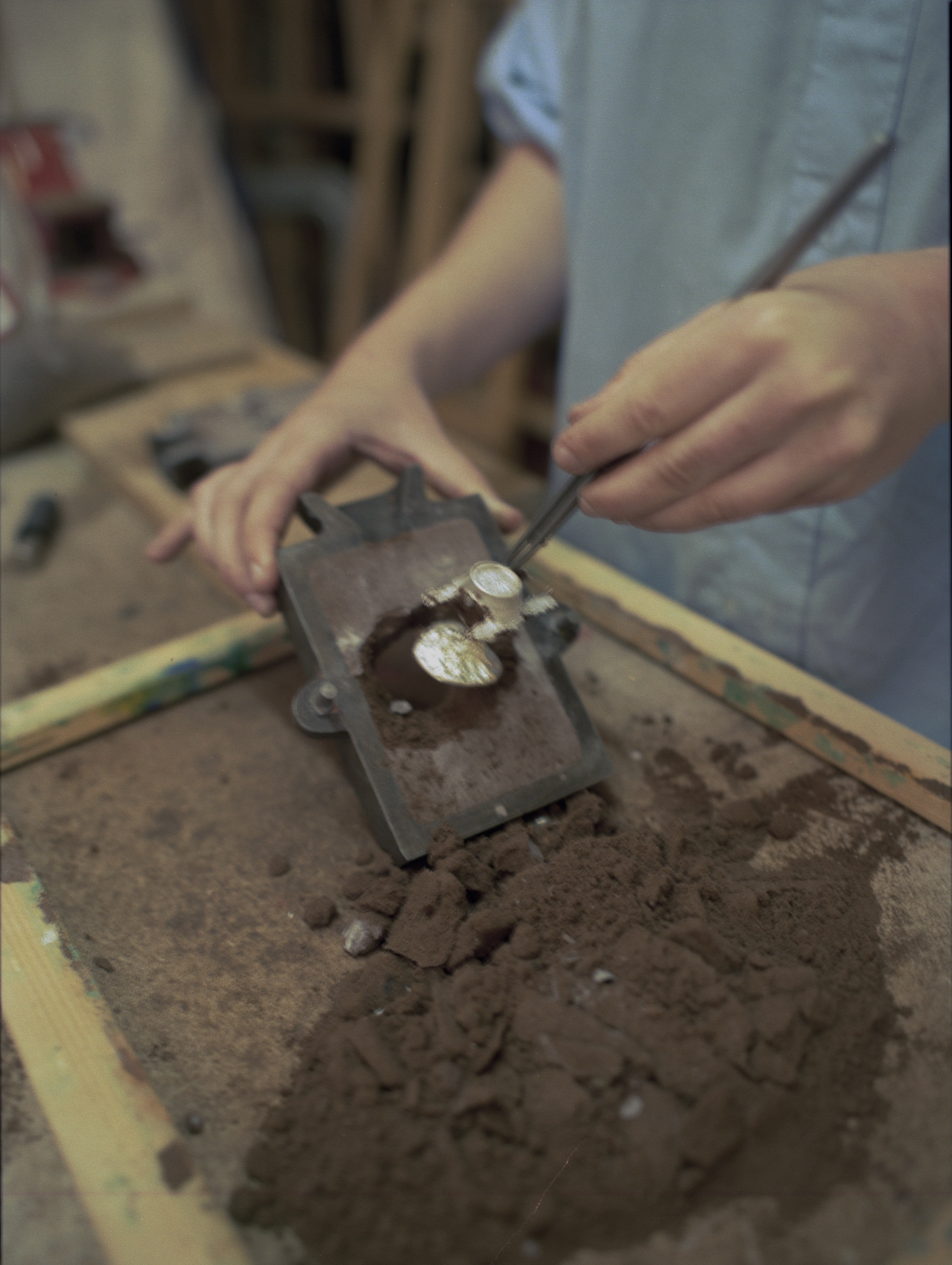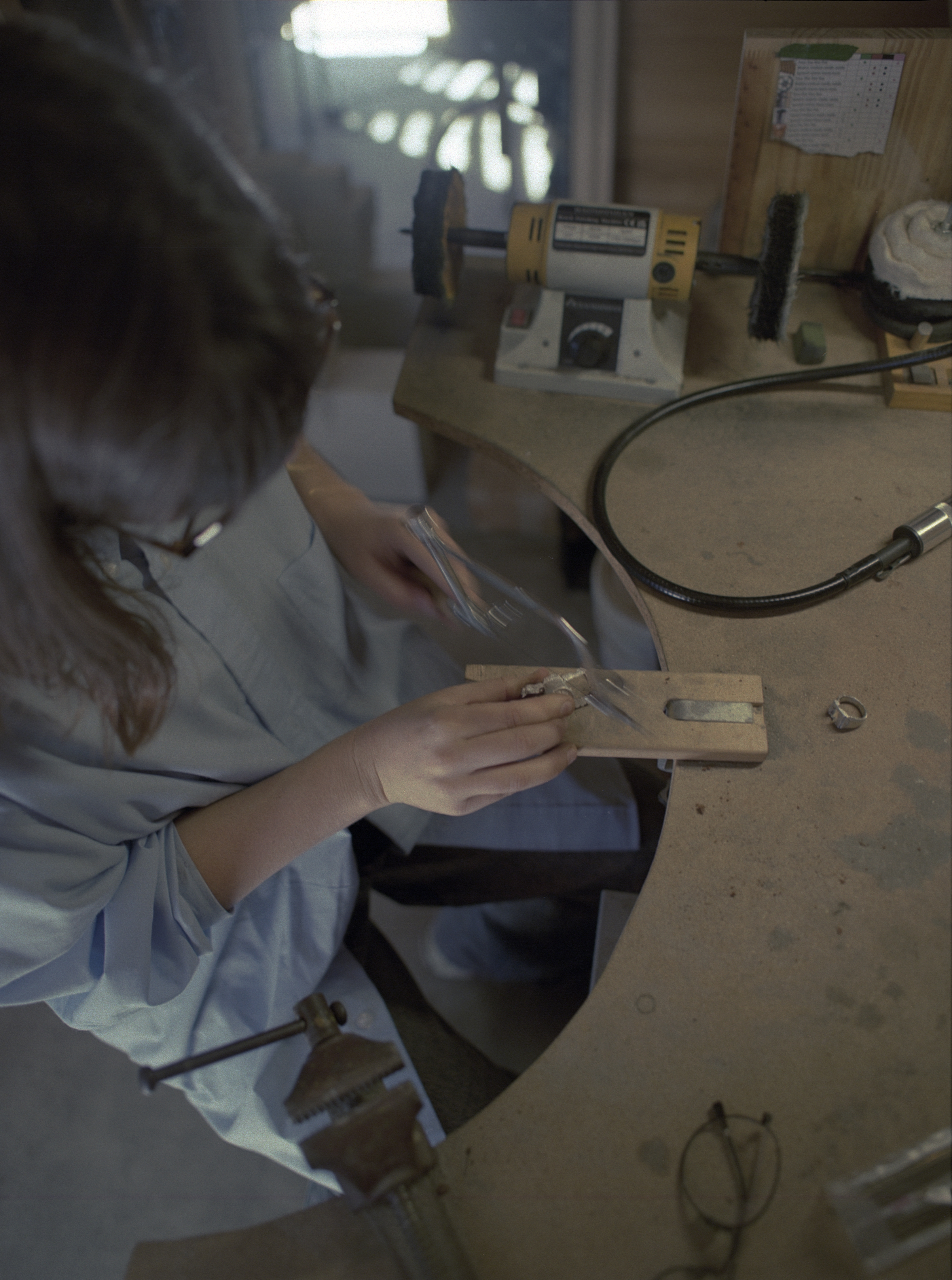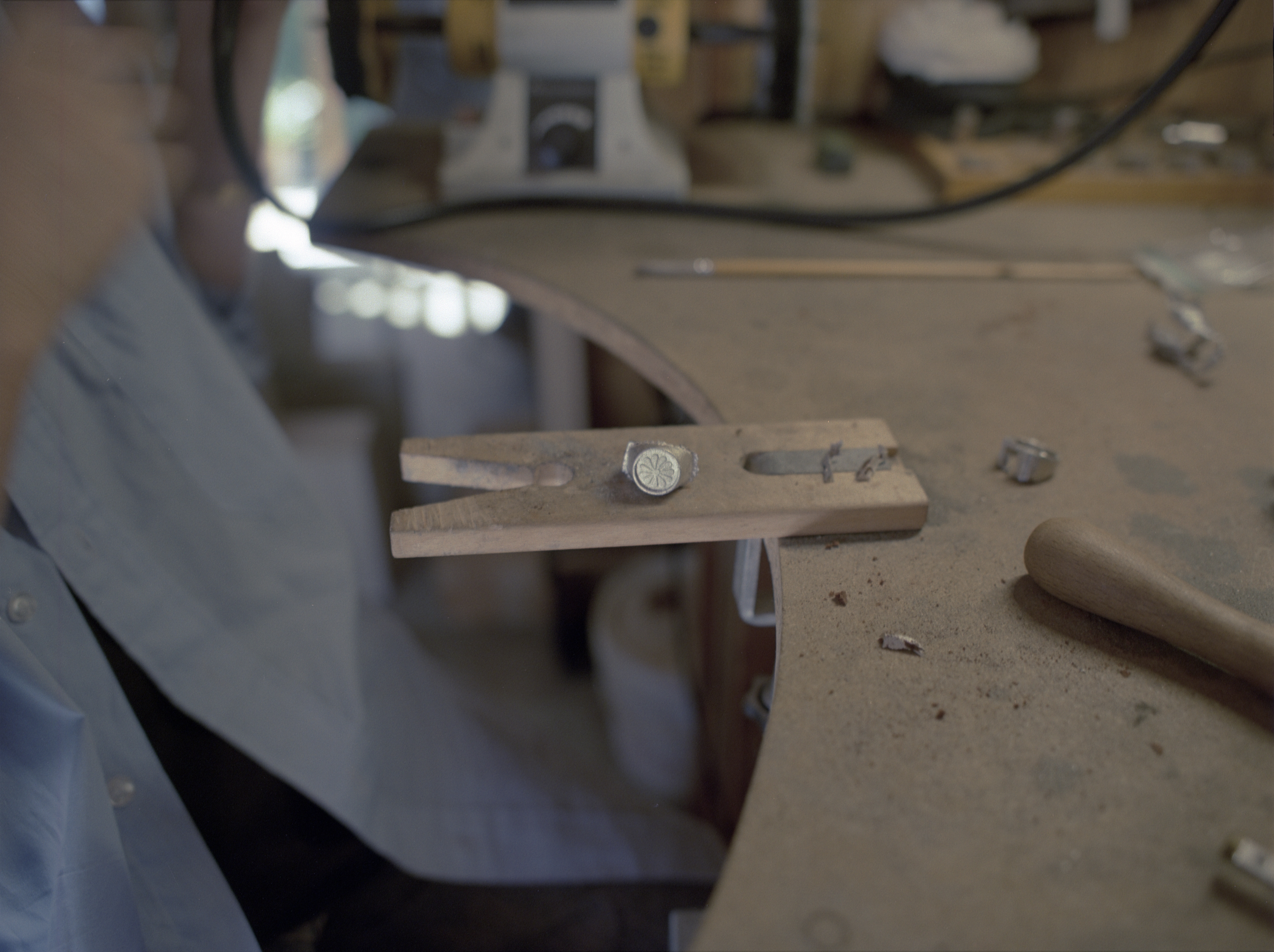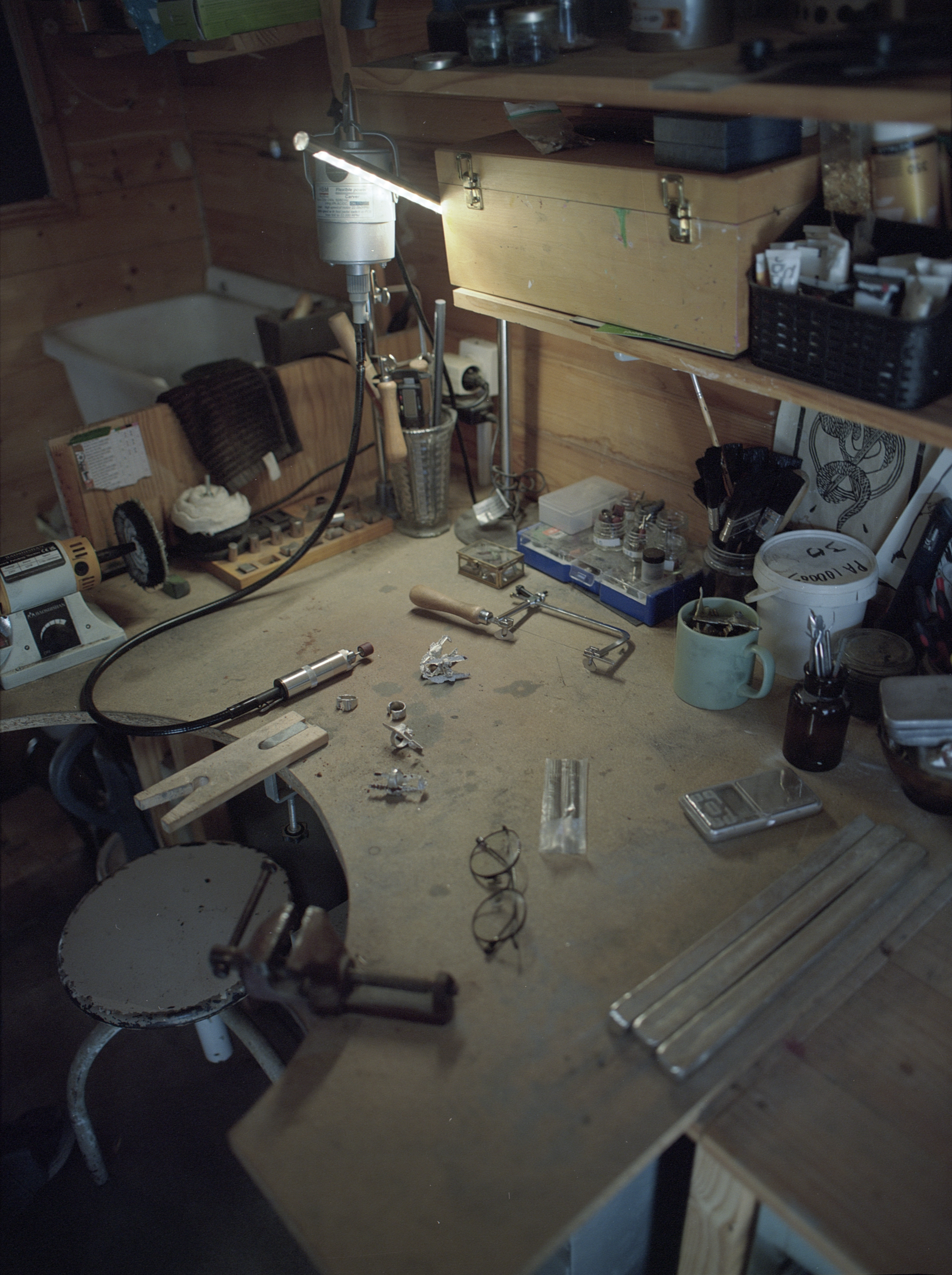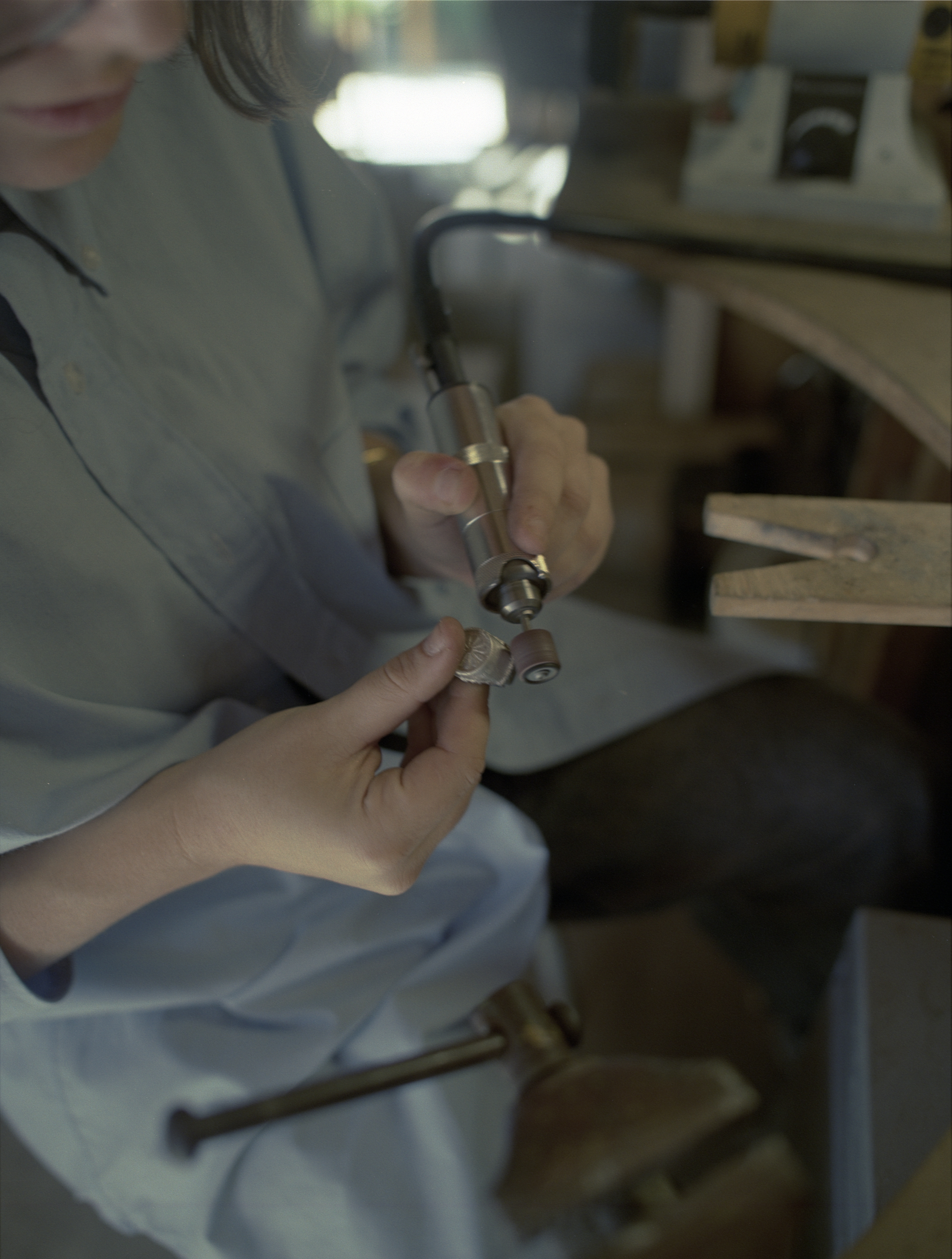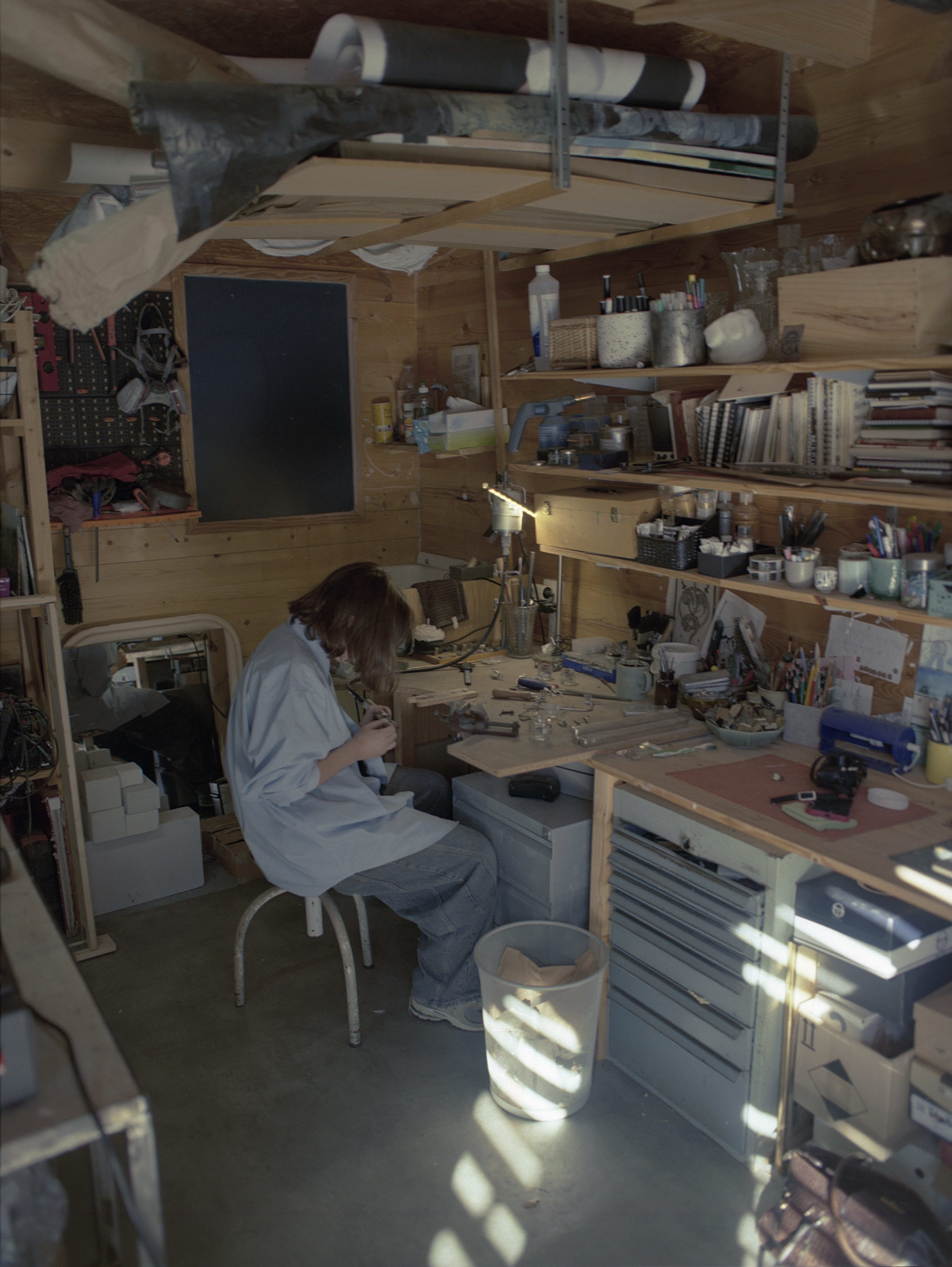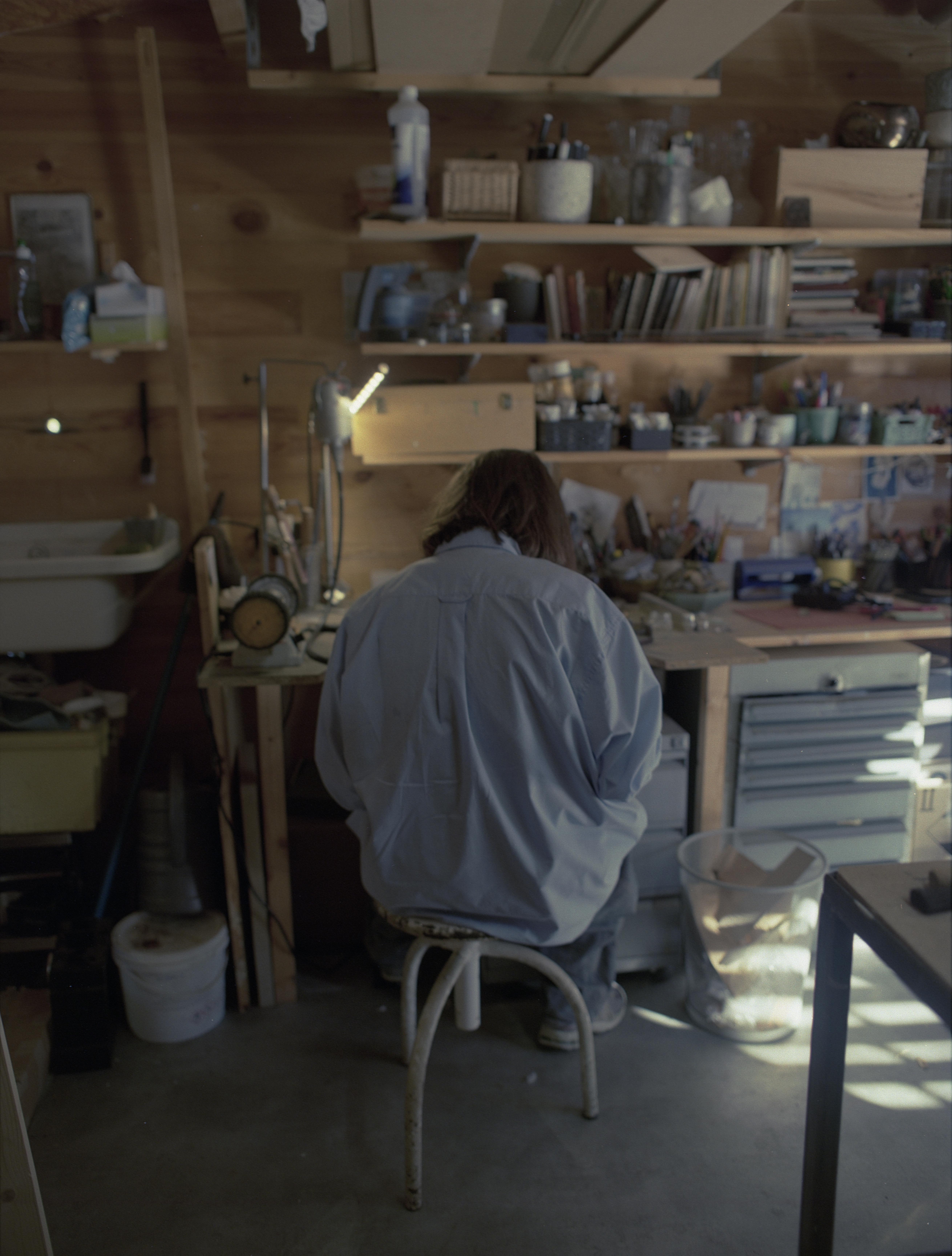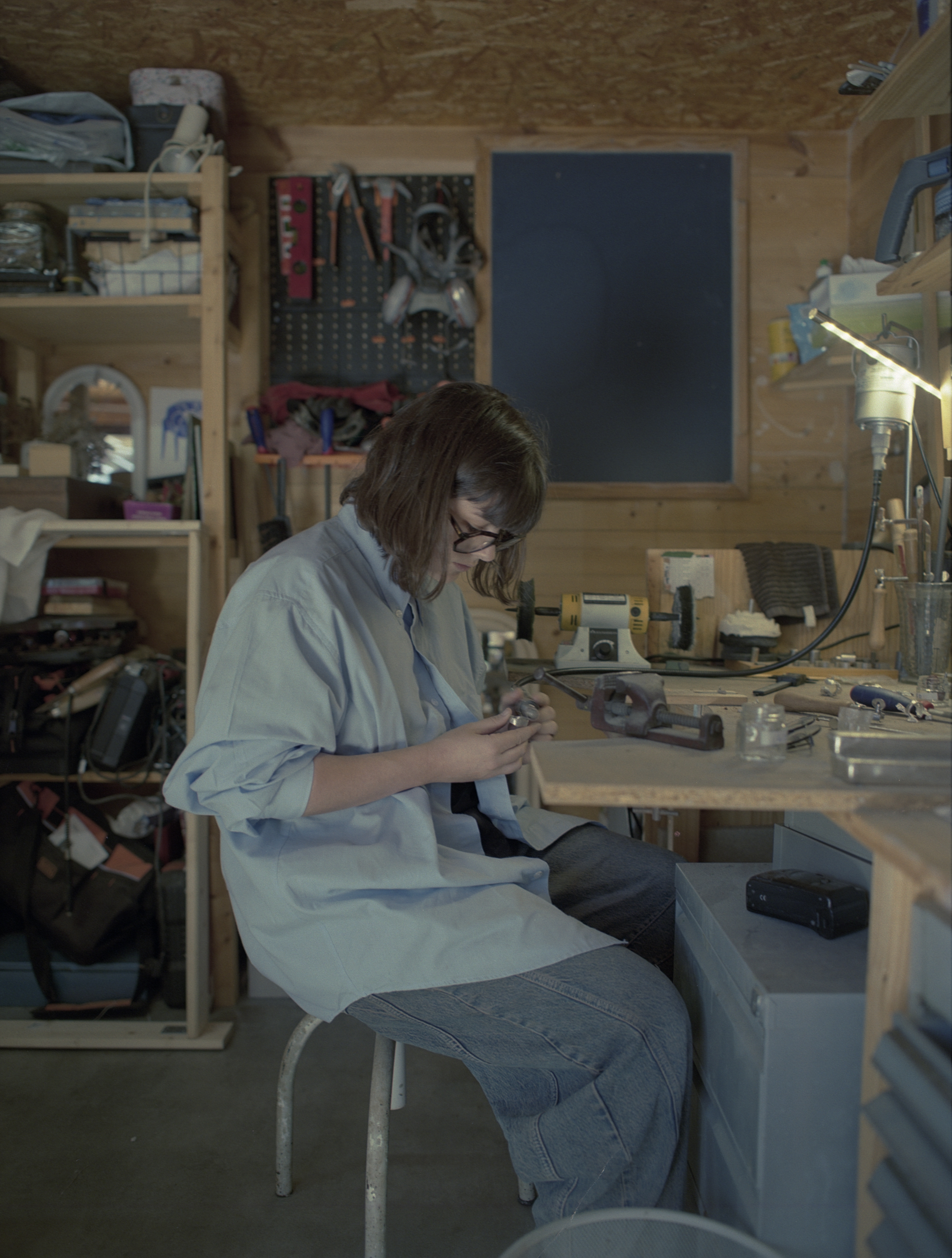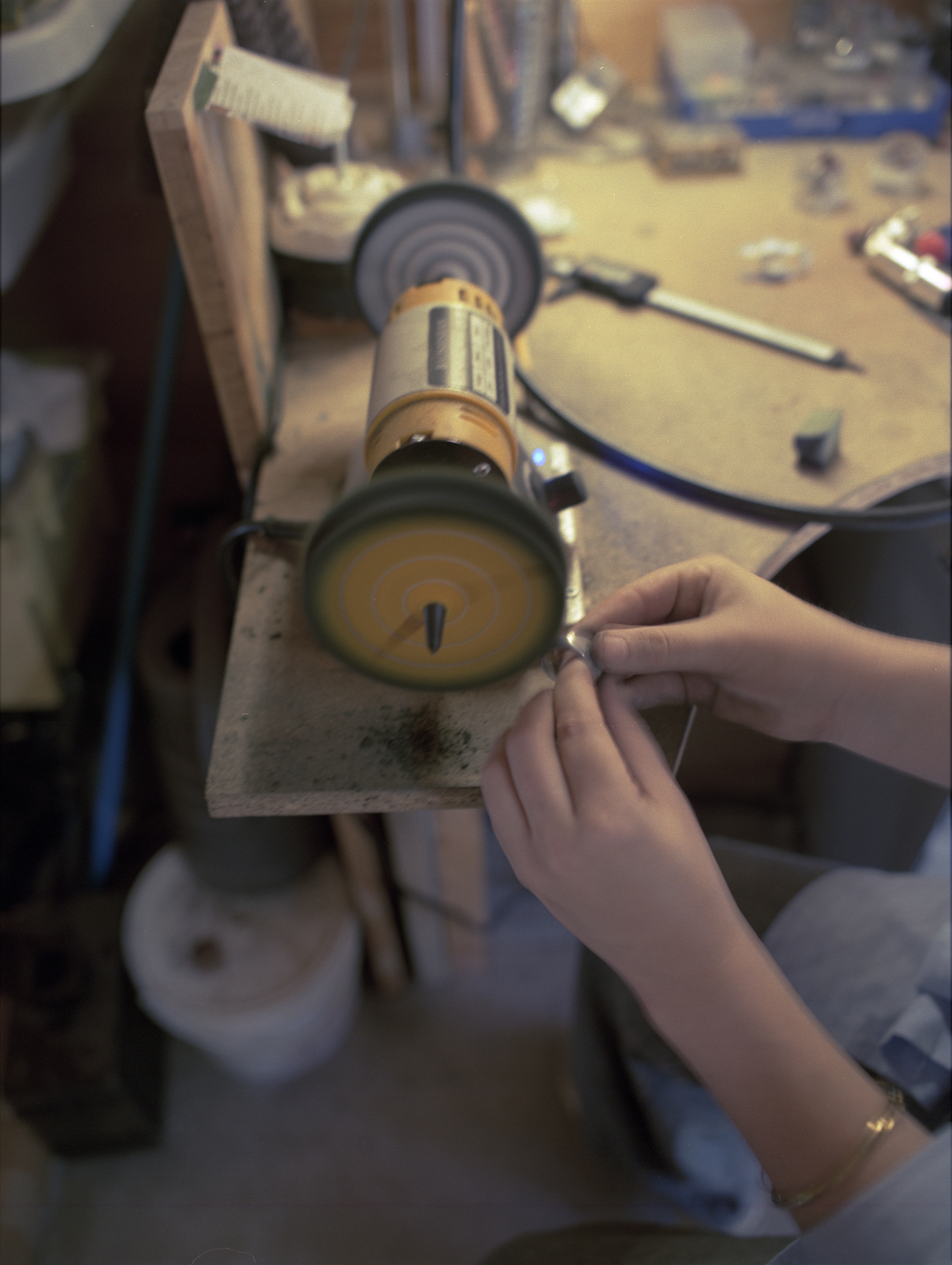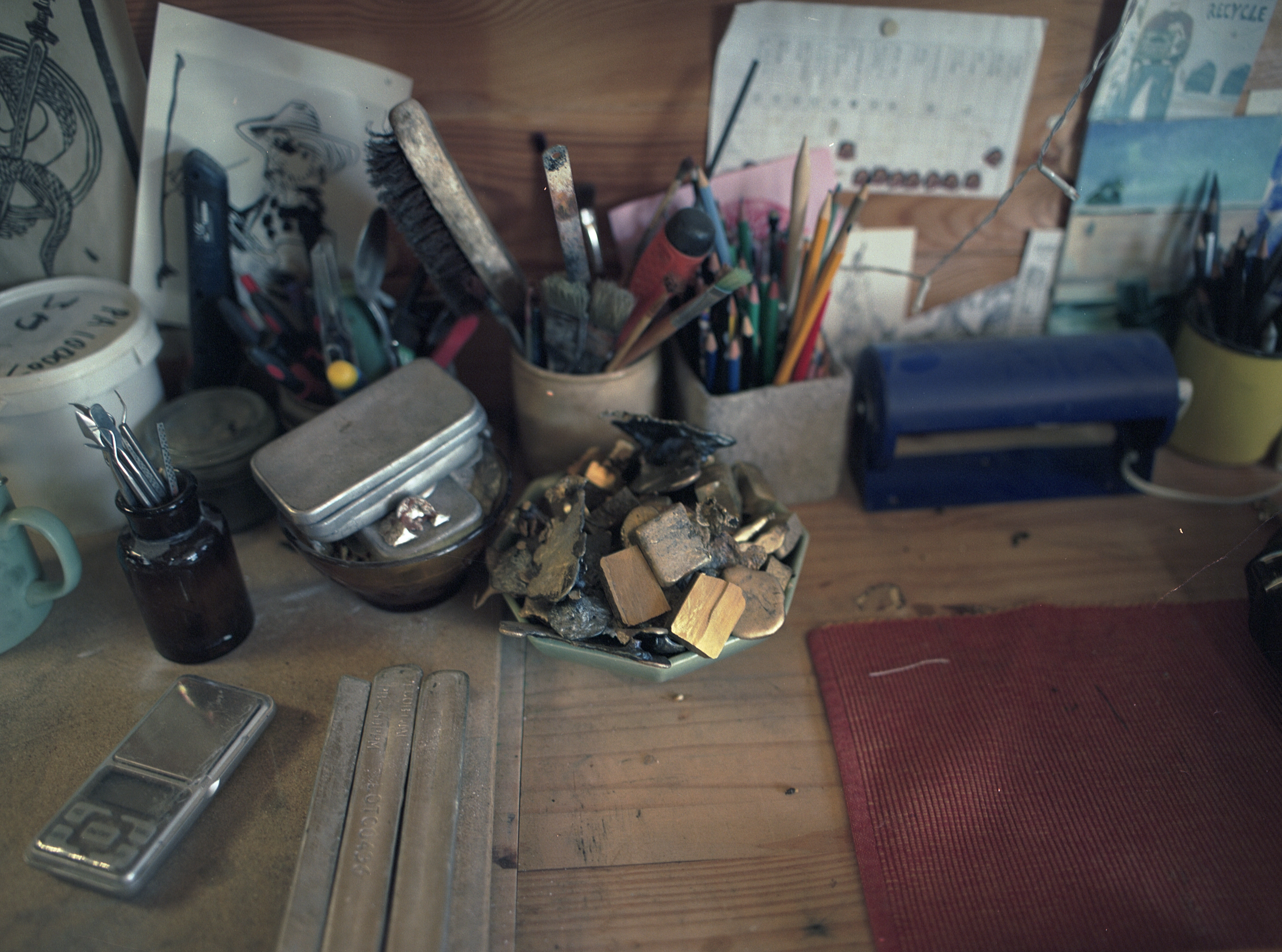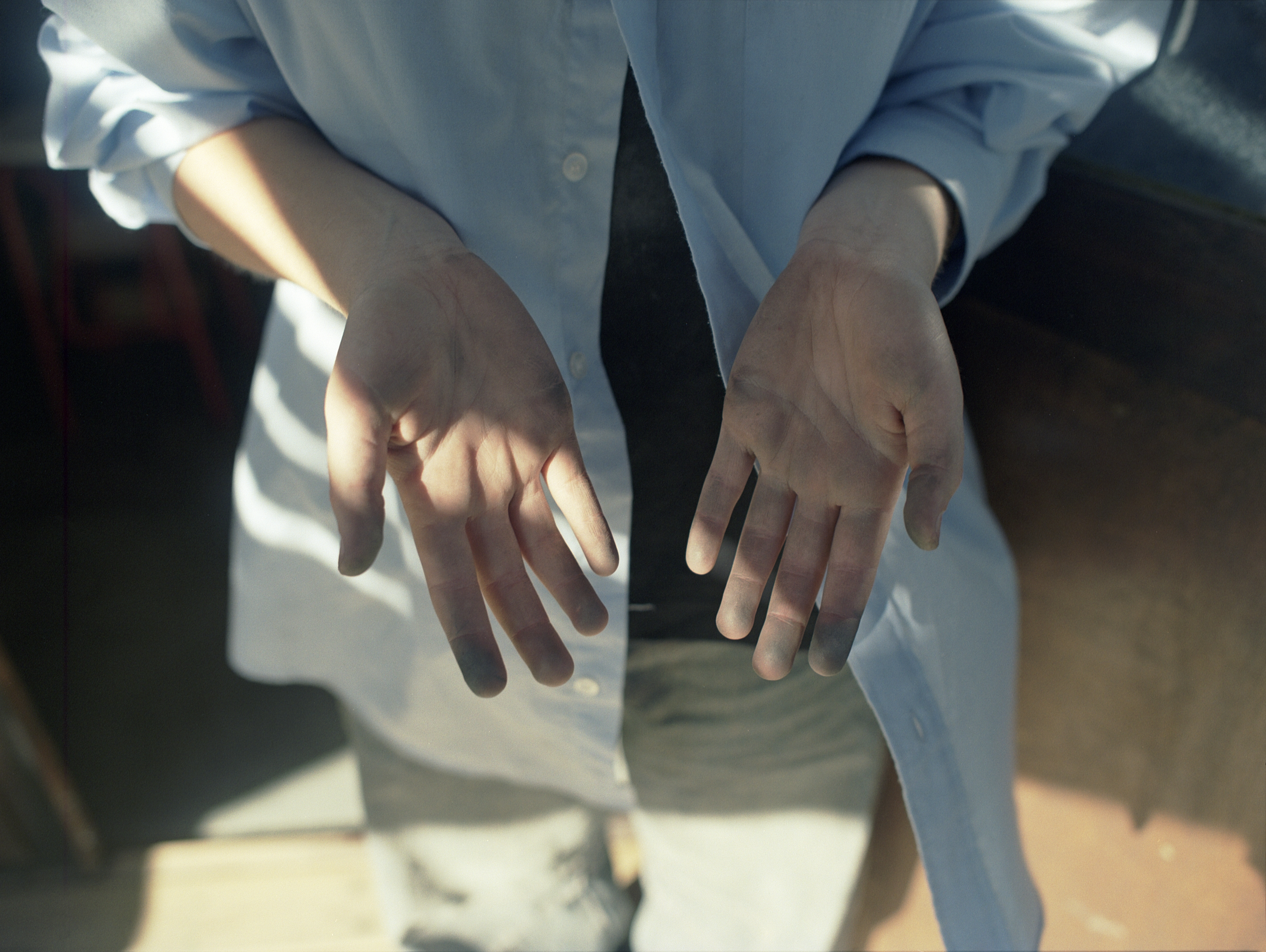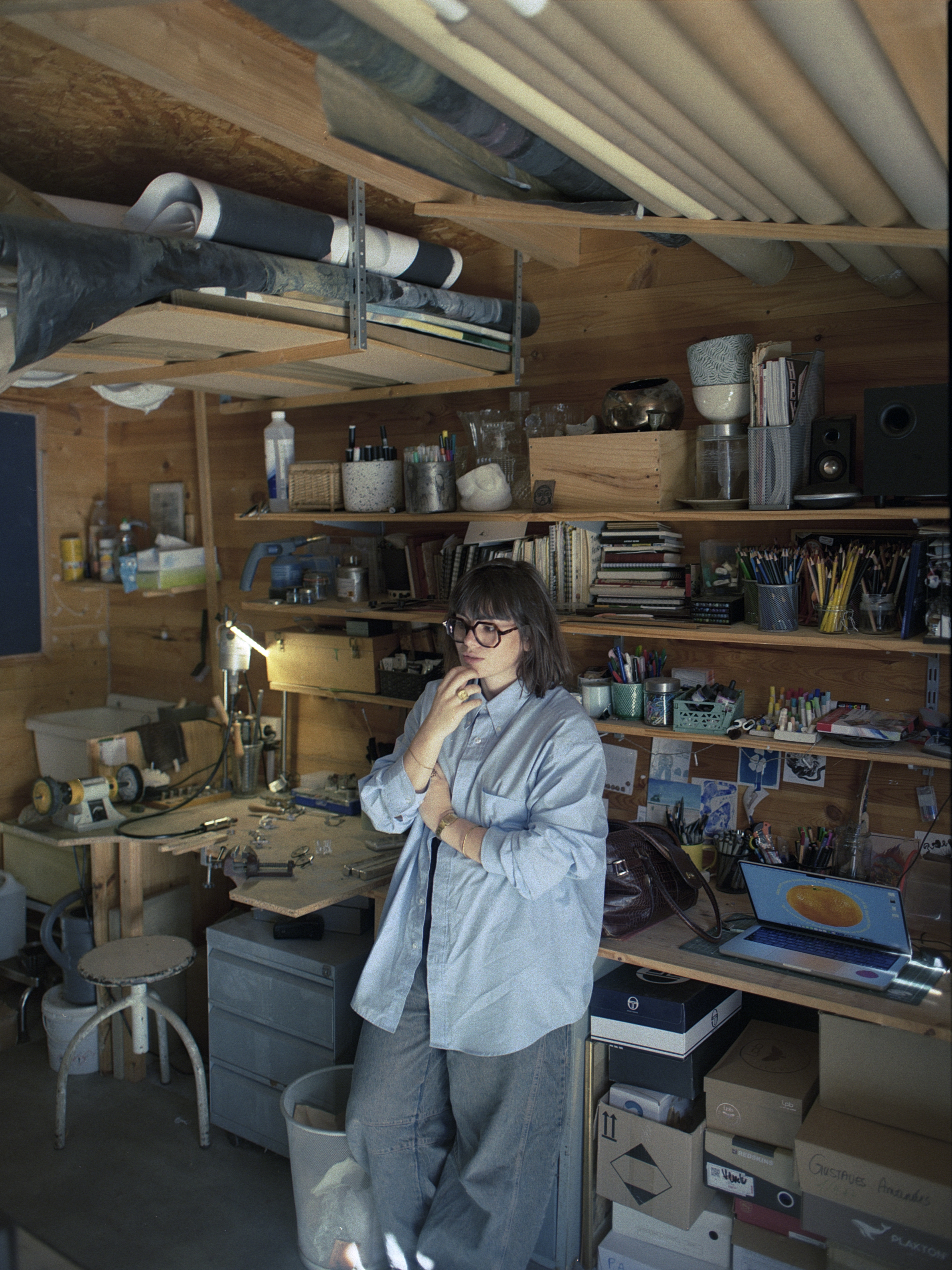
Justine Salvado
En 2025, je découvre une marque de bijoux au hasard d’une friperie toulousaine. Les pièces proposées sont brutes et ce qu’on pourrait appeler “imparfaites”, mais cela leur donne énormément de caractère et de cachet. Les bagues sont positionnées sur des blocs géométriques gris clair : la scénographie est réfléchie et conceptualisée.
Quelques mois plus tard, je rencontre Justine Salvado, la fondatrice de la marque de bijoux archive.s dans son atelier près de Narbonne. Un petit espace lumineux, suffisant pour accueillir sa pratique artistique et sa création de bijoux mais aussi sa sœur peintre. C’est un cabanon rempli d’outils dont elles ont besoin mais aussi pour expérimenter diverses techniques.
Graphiste de formation, Justine Salvado lance sa marque de bijoux en 2020. D’abord adepte du upcycling, elle se forme à la technique artisanale de la fonte à la terre de Delft pendant les confinements. Elle se sert de ce temps pour perfectionner sa technique et faire des recherches approfondies sur les meilleurs composants. Aujourd’hui, elle tient particulièrement à avoir de la transparence sur la provenance des matériaux qu’elle utilise, afin de rester dans une démarche la plus responsable possible pour l’environement. Les pièces sont toutes uniques de part leur fabrication artisanale et donne à chaque bague une authenticité indiscutable.
Quelques mois plus tard, je rencontre Justine Salvado, la fondatrice de la marque de bijoux archive.s dans son atelier près de Narbonne. Un petit espace lumineux, suffisant pour accueillir sa pratique artistique et sa création de bijoux mais aussi sa sœur peintre. C’est un cabanon rempli d’outils dont elles ont besoin mais aussi pour expérimenter diverses techniques.
Graphiste de formation, Justine Salvado lance sa marque de bijoux en 2020. D’abord adepte du upcycling, elle se forme à la technique artisanale de la fonte à la terre de Delft pendant les confinements. Elle se sert de ce temps pour perfectionner sa technique et faire des recherches approfondies sur les meilleurs composants. Aujourd’hui, elle tient particulièrement à avoir de la transparence sur la provenance des matériaux qu’elle utilise, afin de rester dans une démarche la plus responsable possible pour l’environement. Les pièces sont toutes uniques de part leur fabrication artisanale et donne à chaque bague une authenticité indiscutable.
Elle me propose de la suivre tout au long du processus de fabrication d’une bague en allant de l’empreinte dans la terre au façonnage final d’une pièce. Sans parler de toutes les recherches conceptuelles qu’elle fait auparavant pour sa collection, la création du design se fait au préalable sur ordinateur, suivi d’une impression en 3D du design qu’elle effectue dans un autre local.
Cette impression lui donne un moule qu’elle utilise ensuite pour créer son empreinte dans la terre et couler sa matière : de l’étain recyclé ou du laiton. Lors de ma visite, elle est en attente de son poinçon d’authenticité pour les prochaines pièces en argent qu’elle réalisera !
Une fois la pièce coulée et démoulée de la terre, le surplus est retiré et recyclé puis commence le façonnage. Cette étape est plutôt longue, mais de mon point de vue elle semble presque méditative. L’ajustement à la taille souhaitée arrive ensuite et elle applique un revetement sur la bague pour finalement la polir.
En attendant sa nouvelle collection qui regorge déjà de nouvelles envies et idées, sa première collection de bijoux rencontre un très beau succès et on peut la retrouver au Printemps et dans la boutique Nouvelle Rive, à Paris.
Je tiens à remercier Justine pour son accueil et pour son jolie cadeau gentiment offert après notre séance de photographies.
Cette impression lui donne un moule qu’elle utilise ensuite pour créer son empreinte dans la terre et couler sa matière : de l’étain recyclé ou du laiton. Lors de ma visite, elle est en attente de son poinçon d’authenticité pour les prochaines pièces en argent qu’elle réalisera !
Une fois la pièce coulée et démoulée de la terre, le surplus est retiré et recyclé puis commence le façonnage. Cette étape est plutôt longue, mais de mon point de vue elle semble presque méditative. L’ajustement à la taille souhaitée arrive ensuite et elle applique un revetement sur la bague pour finalement la polir.
En attendant sa nouvelle collection qui regorge déjà de nouvelles envies et idées, sa première collection de bijoux rencontre un très beau succès et on peut la retrouver au Printemps et dans la boutique Nouvelle Rive, à Paris.
Je tiens à remercier Justine pour son accueil et pour son jolie cadeau gentiment offert après notre séance de photographies.
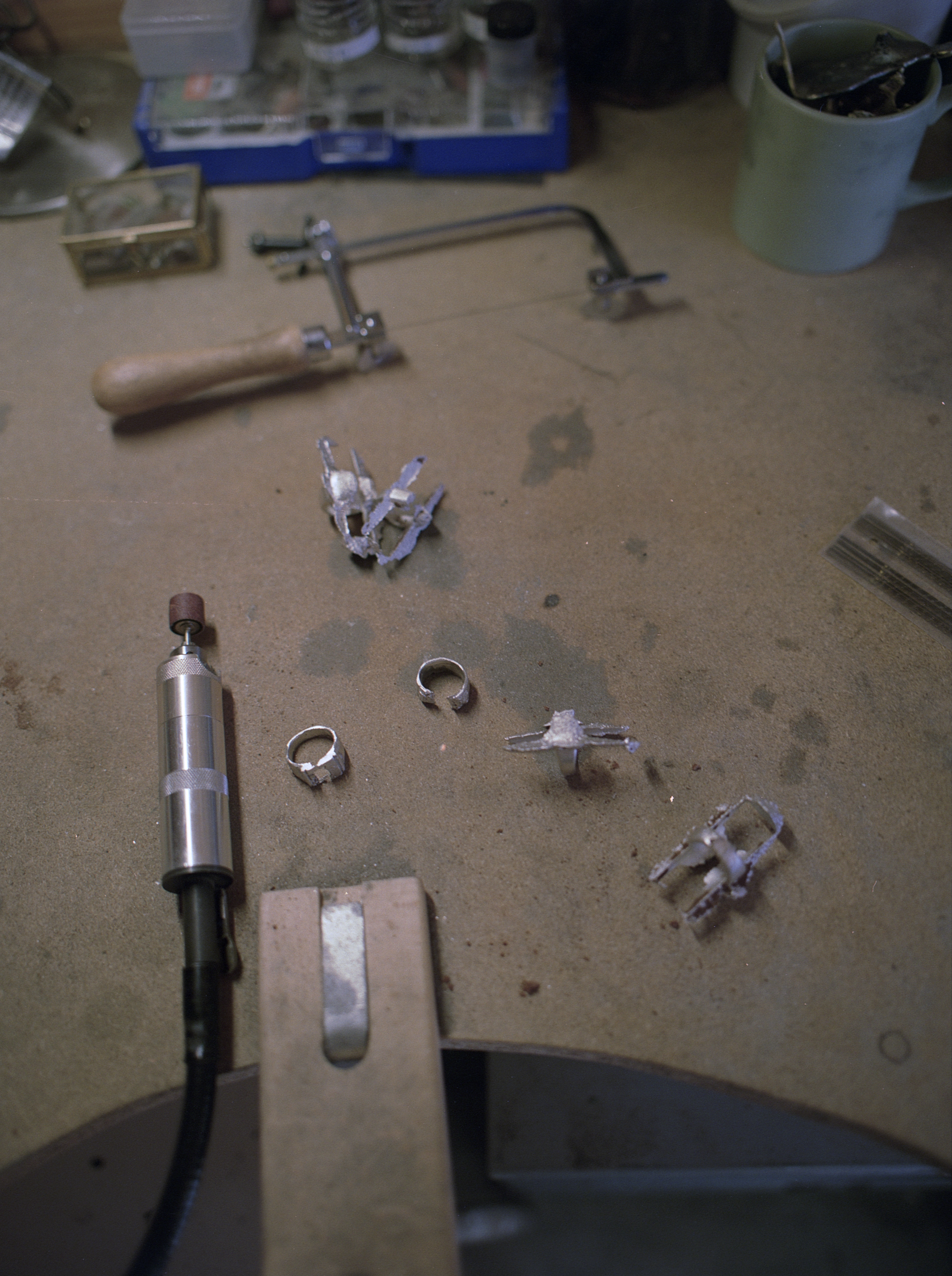
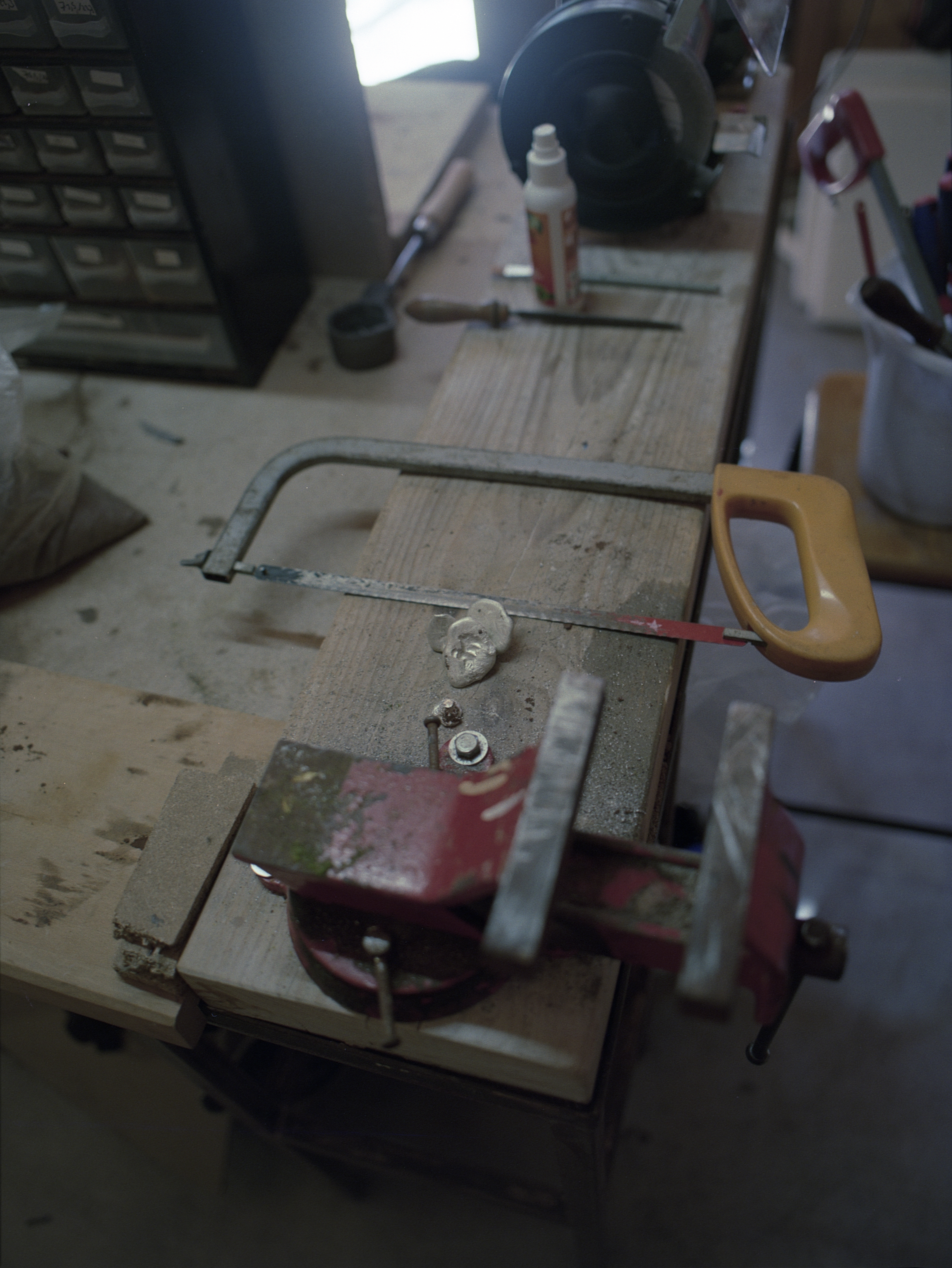
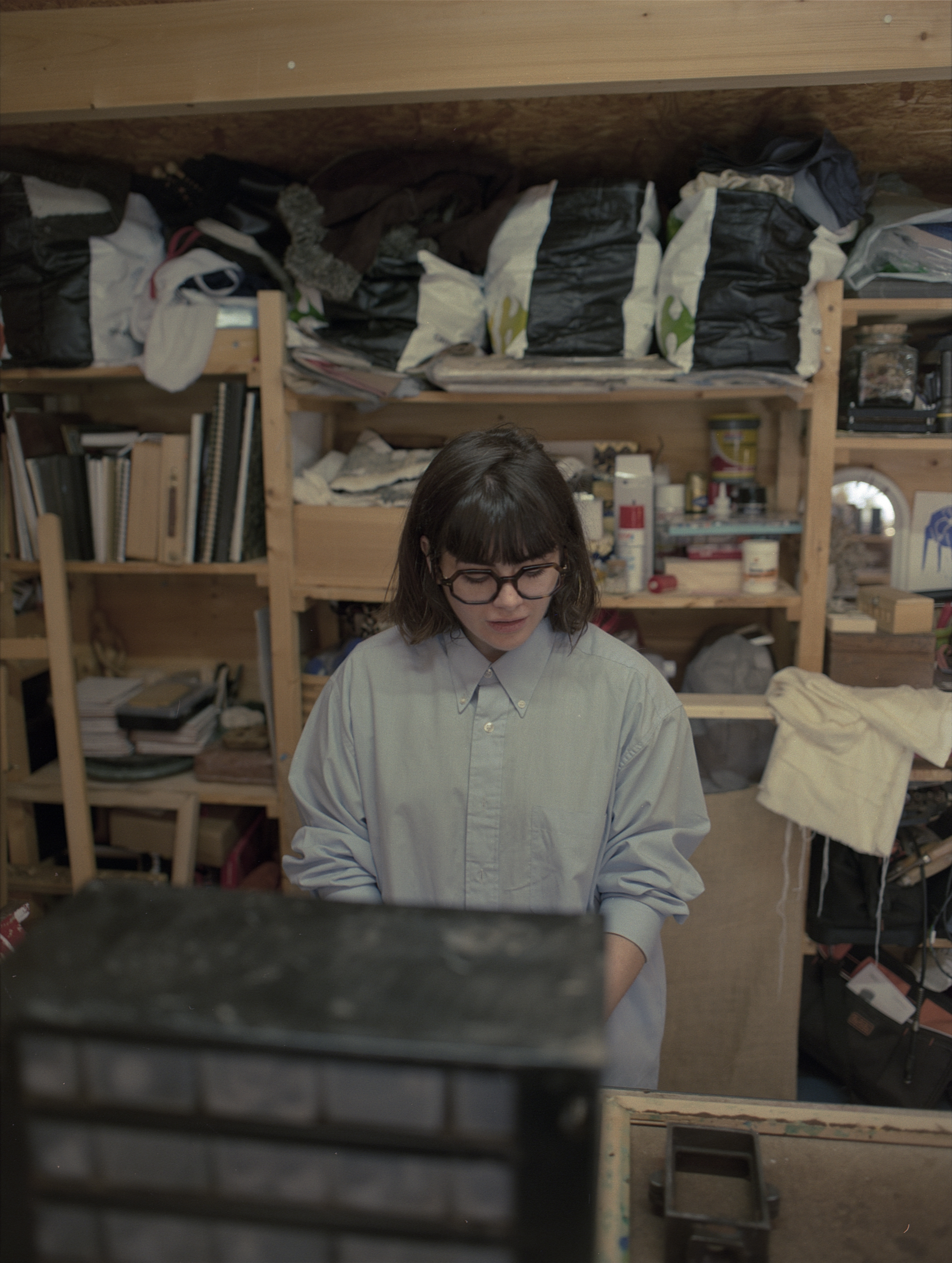

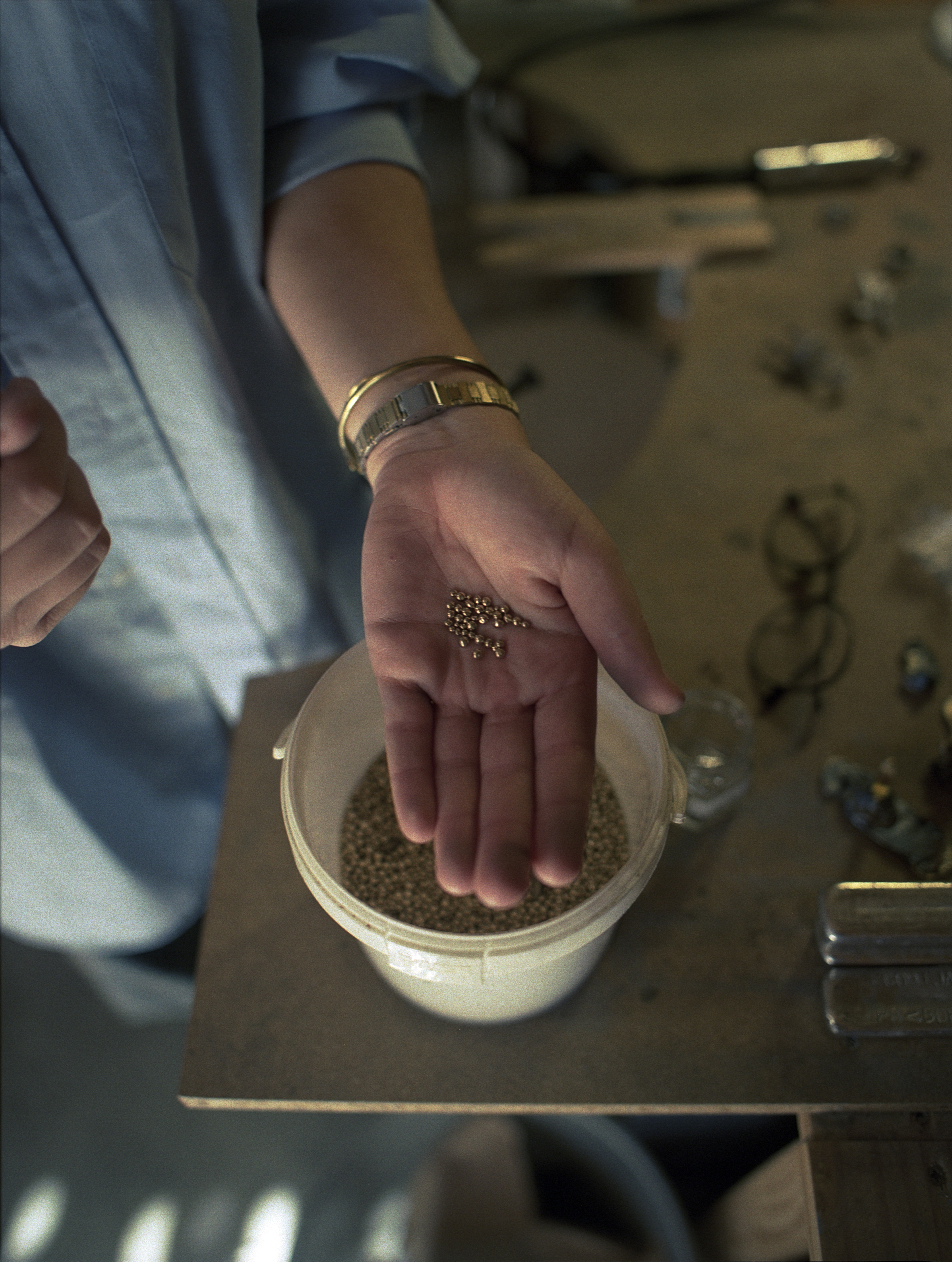
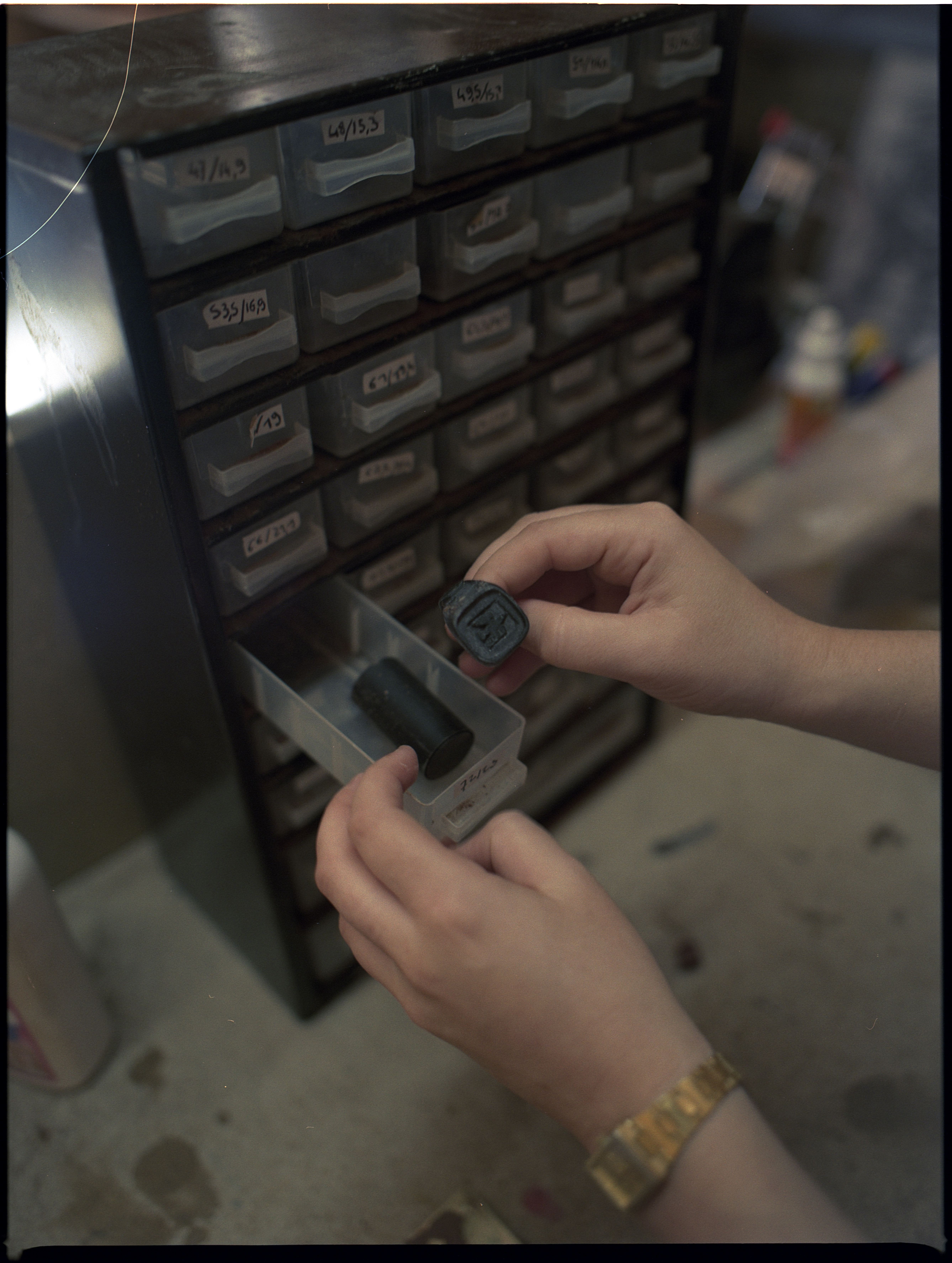
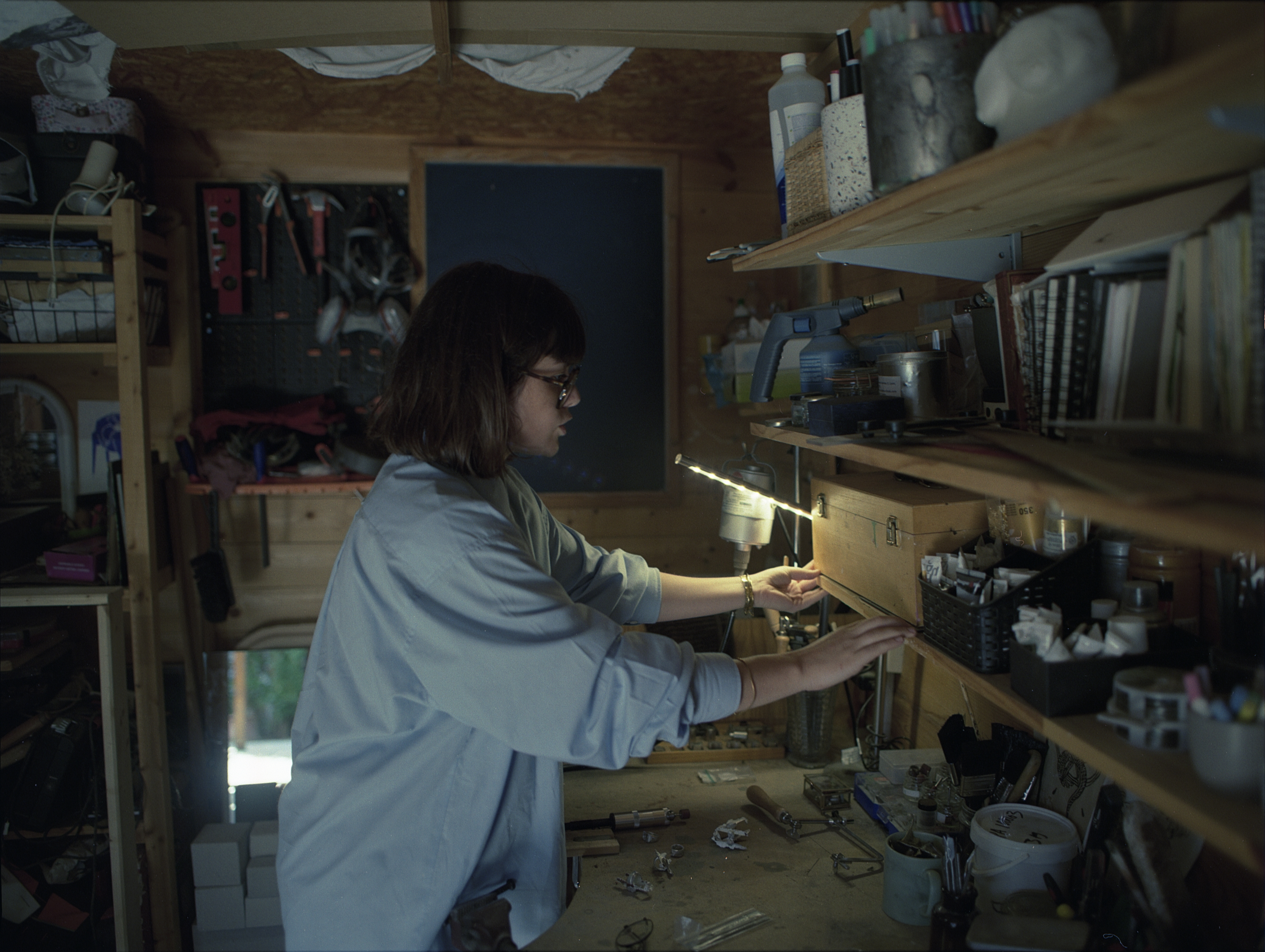
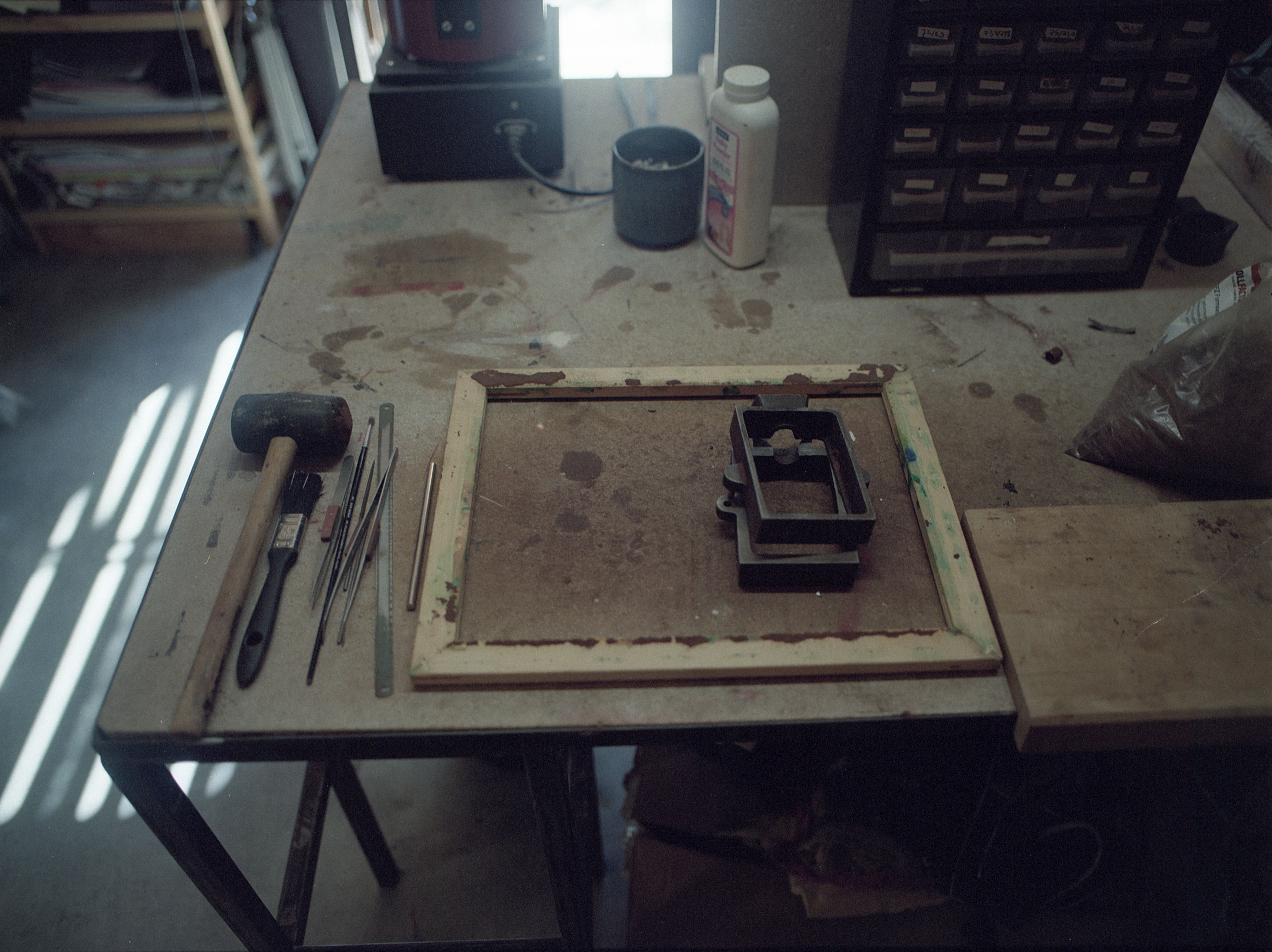
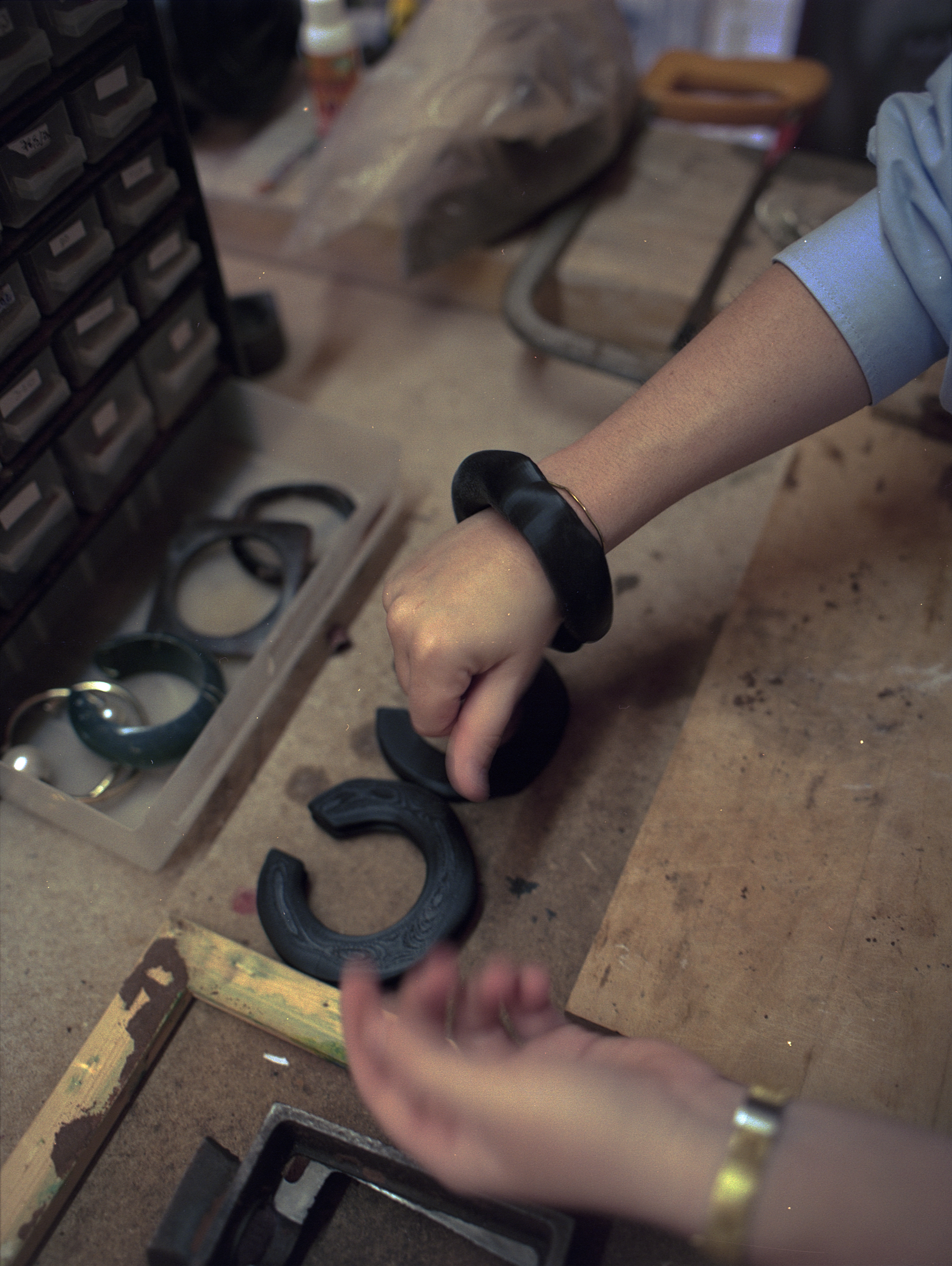
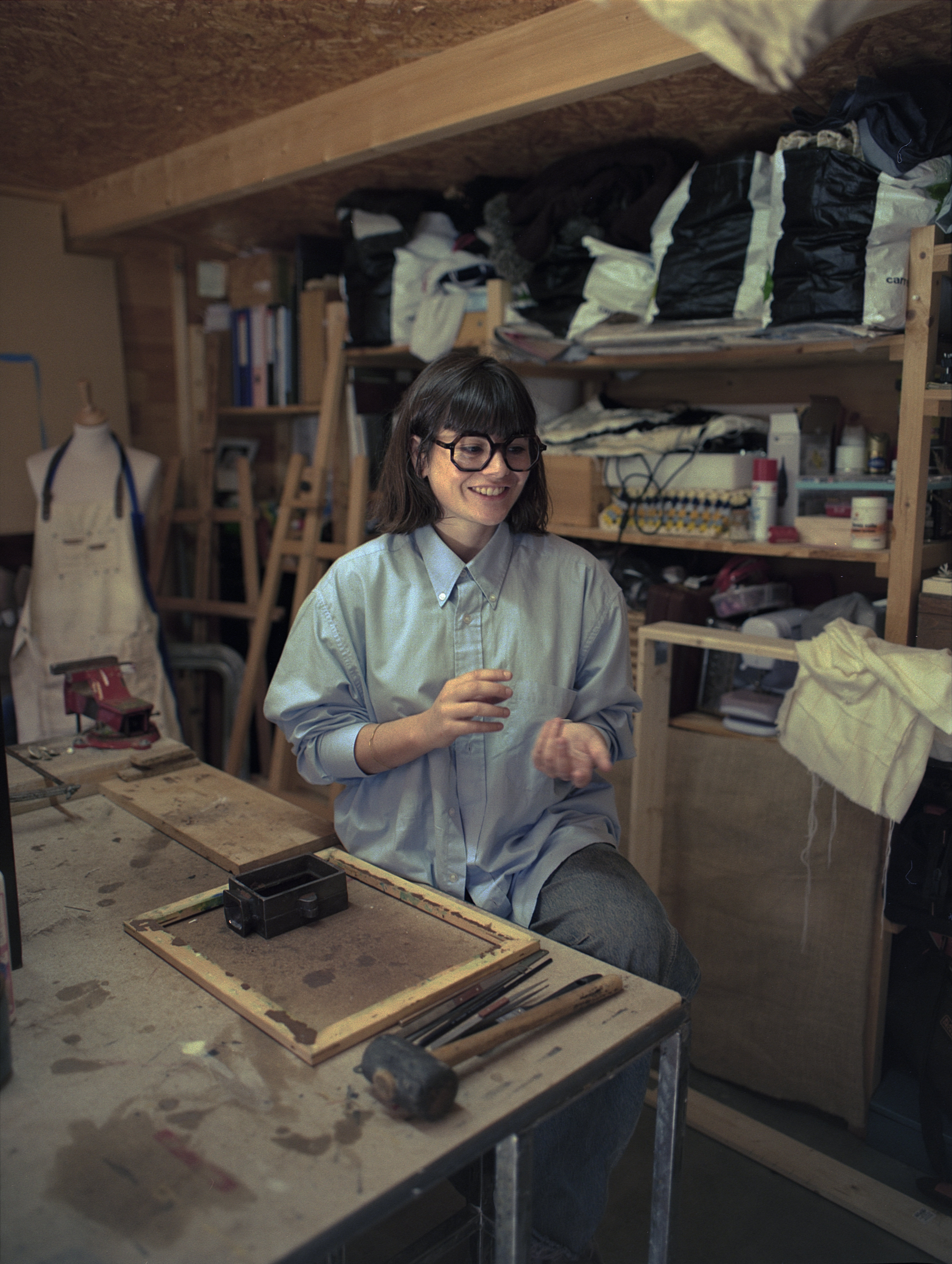
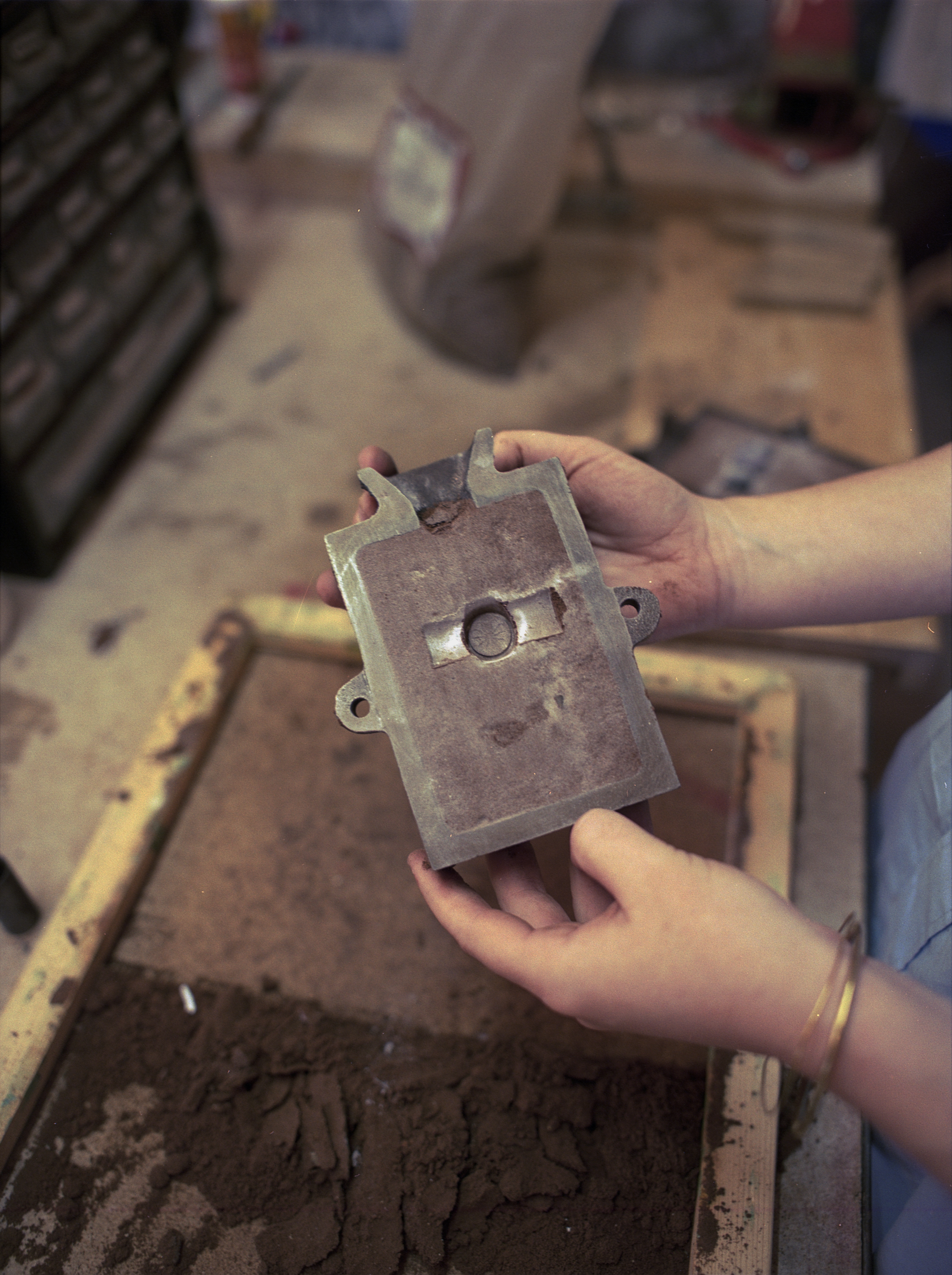
Justine Salvado
Justine Salvado
In 2025, I discovered a jewelry brand by chance in a thrift store in Toulouse. The pieces on offer were raw and what you might call “imperfect,” but this gave them a lot of character and charm. The rings were displayed on light gray geometric blocks: the layout was well thought out and conceptualized.
A few months later, I meet Justine Salvado, founder of the jewelry brand archive.s, in her studio near Narbonne. It is a small, bright space, large enough to accommodate her artistic practice and jewelry creation, as well as her sister, who is a painter. It is a shed filled with the tools they need, but also a place to experiment with various techniques.
A graphic designer by training, Justine Salvado launched her jewelry brand in 2020. Initially an upcycling enthusiast, she trained in the artisanal technique of Delft earth casting during lockdown. She used this time to perfect her technique and conduct in-depth research into the best components. Today, she is particularly keen to be transparent about the origin of the materials she uses, in order to remain as environmentally responsible as possible. The pieces are all unique due to their artisanal manufacture, giving each ring an undeniable authenticity.
A few months later, I meet Justine Salvado, founder of the jewelry brand archive.s, in her studio near Narbonne. It is a small, bright space, large enough to accommodate her artistic practice and jewelry creation, as well as her sister, who is a painter. It is a shed filled with the tools they need, but also a place to experiment with various techniques.
A graphic designer by training, Justine Salvado launched her jewelry brand in 2020. Initially an upcycling enthusiast, she trained in the artisanal technique of Delft earth casting during lockdown. She used this time to perfect her technique and conduct in-depth research into the best components. Today, she is particularly keen to be transparent about the origin of the materials she uses, in order to remain as environmentally responsible as possible. The pieces are all unique due to their artisanal manufacture, giving each ring an undeniable authenticity.
She invites me to follow her through the entire process of making a ring, from the initial impression in clay to the final shaping of the piece. Not to mention all the conceptual research she does beforehand for her collection, the design is first created on a computer, followed by a 3D print of the design, which she does in another room.
This print gives her a mold that she then uses to create her impression in the clay and cast her material: recycled tin or brass. During my visit, she is waiting for her authenticity stamp for the next silver pieces she will be making !
Once the piece has been cast and removed from the clay mold, the excess is removed and recycled, and then the shaping begins. This step is quite long, but from my point of view it seems almost meditative. The piece is then adjusted to the desired size, and she applies a coating to the ring before finally polishing it.
While we wait for her new collection, which is already brimming with new ideas and inspiration, her first jewelry collection has been a huge success and can be found at Printemps and the Nouvelle Rive boutique in Paris.
I would like to thank Justine for her warm welcome and for the lovely gift she kindly gave us after our photo shoot.
This print gives her a mold that she then uses to create her impression in the clay and cast her material: recycled tin or brass. During my visit, she is waiting for her authenticity stamp for the next silver pieces she will be making !
Once the piece has been cast and removed from the clay mold, the excess is removed and recycled, and then the shaping begins. This step is quite long, but from my point of view it seems almost meditative. The piece is then adjusted to the desired size, and she applies a coating to the ring before finally polishing it.
While we wait for her new collection, which is already brimming with new ideas and inspiration, her first jewelry collection has been a huge success and can be found at Printemps and the Nouvelle Rive boutique in Paris.
I would like to thank Justine for her warm welcome and for the lovely gift she kindly gave us after our photo shoot.
